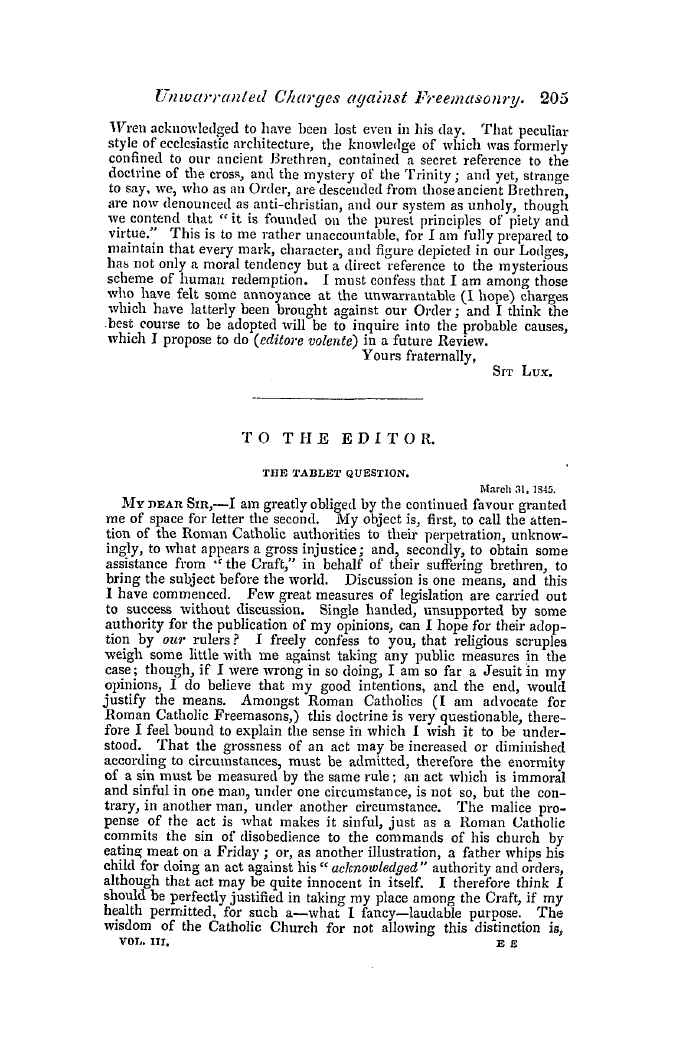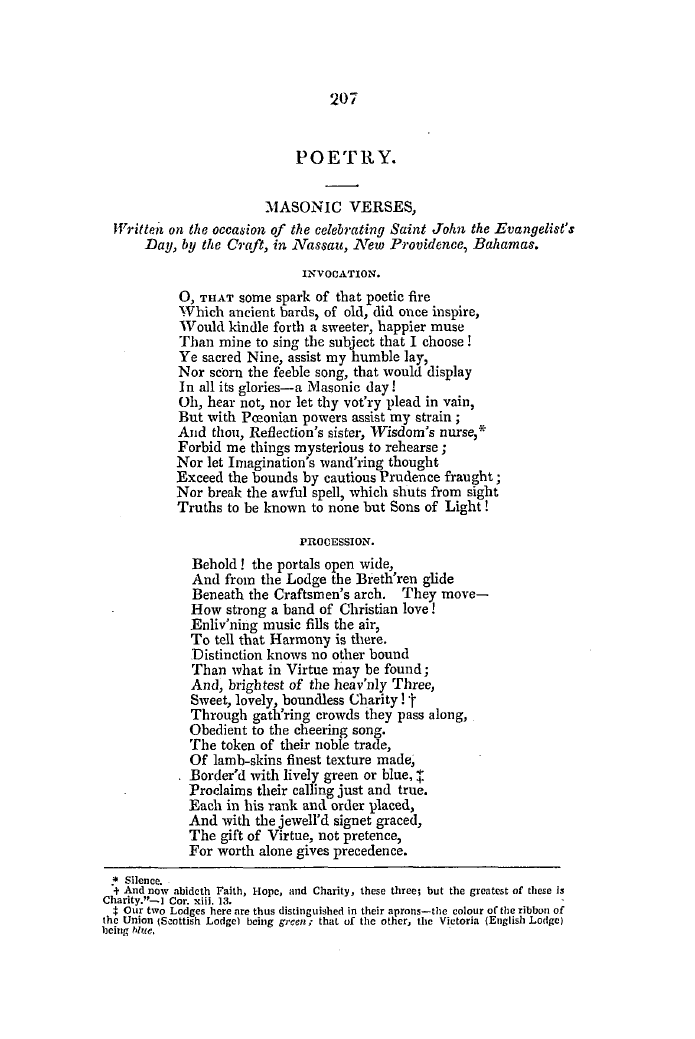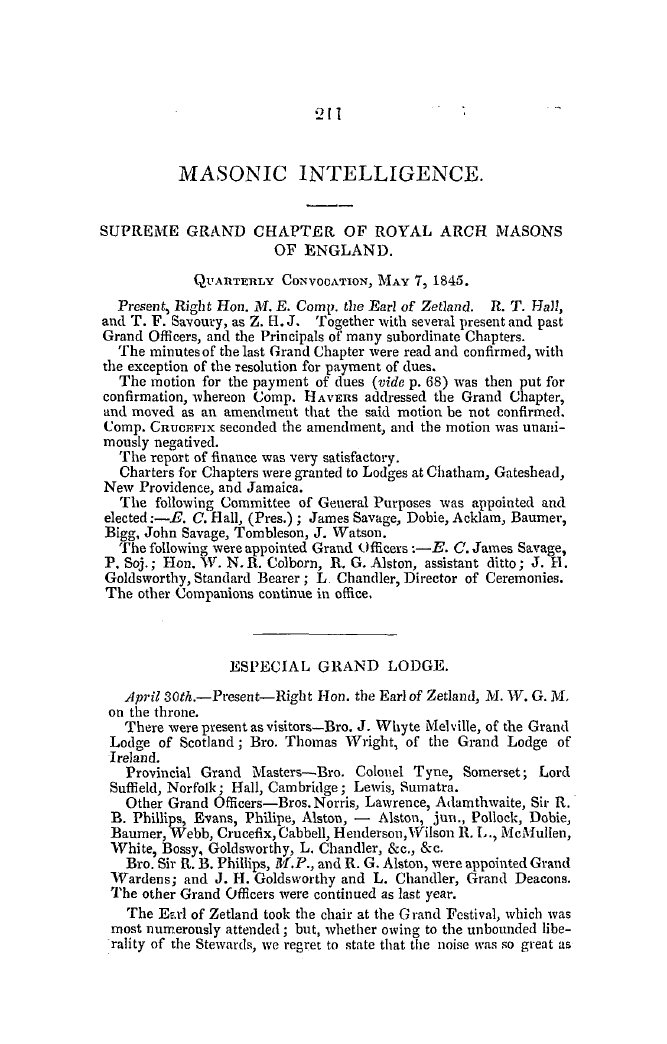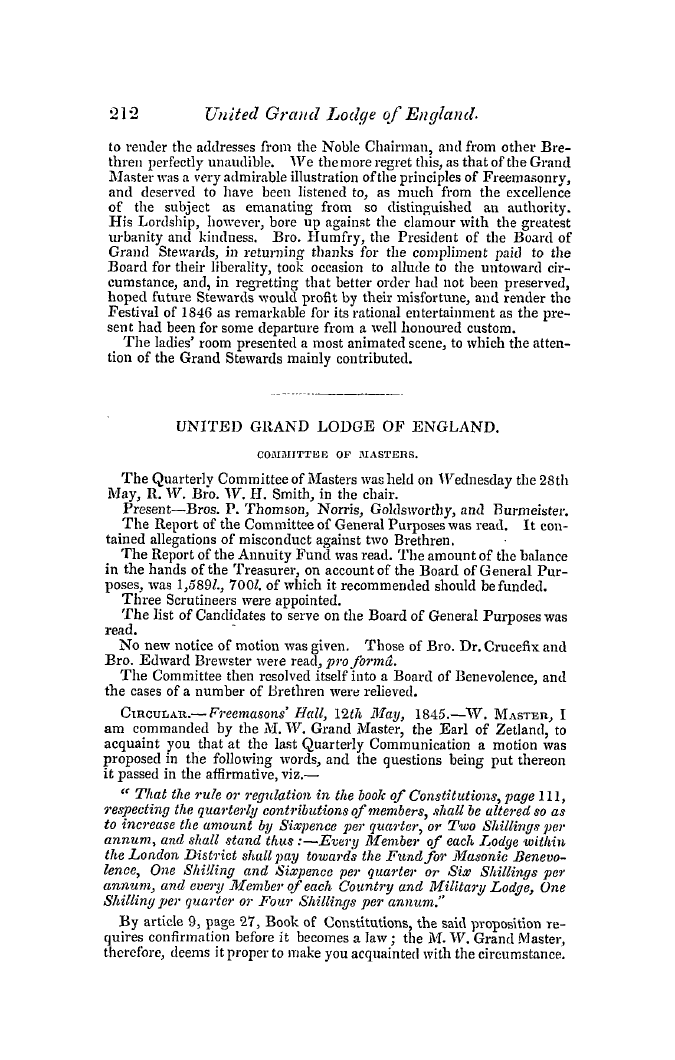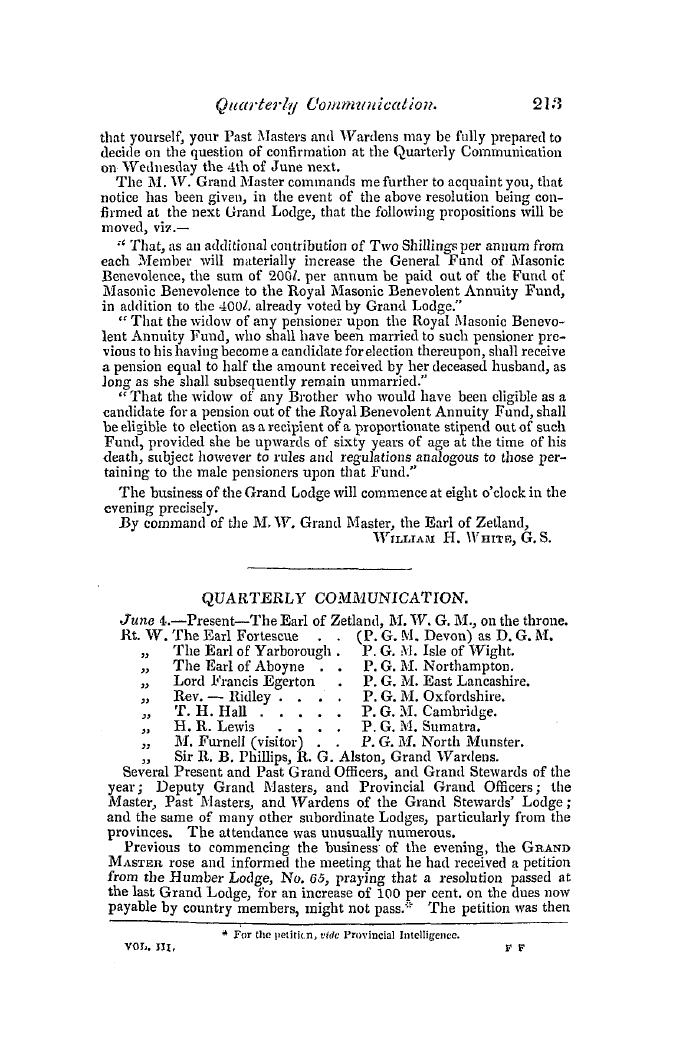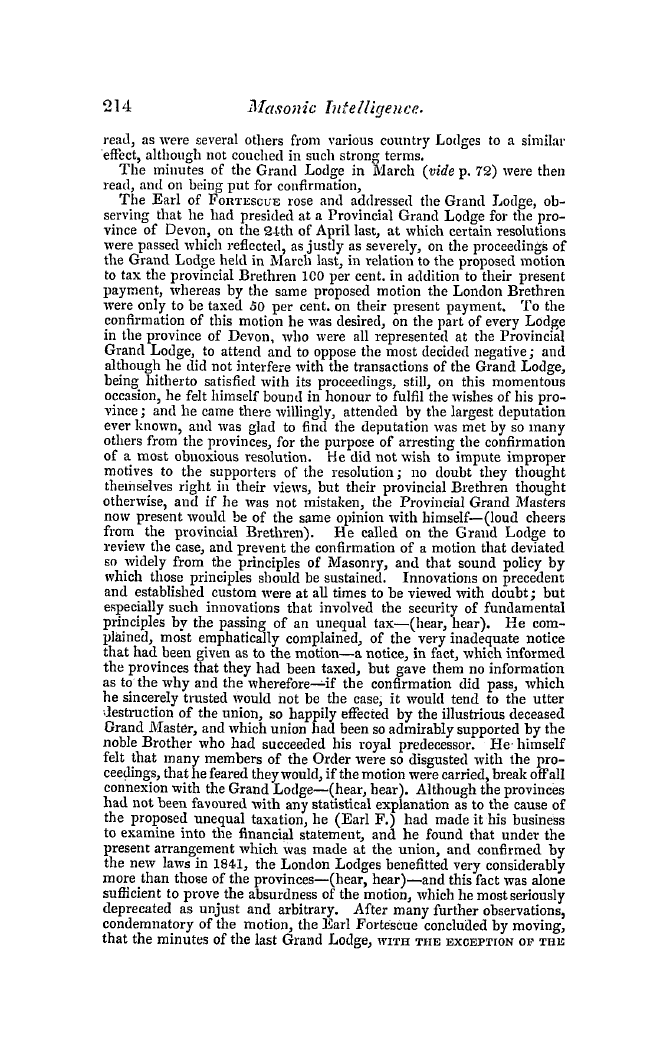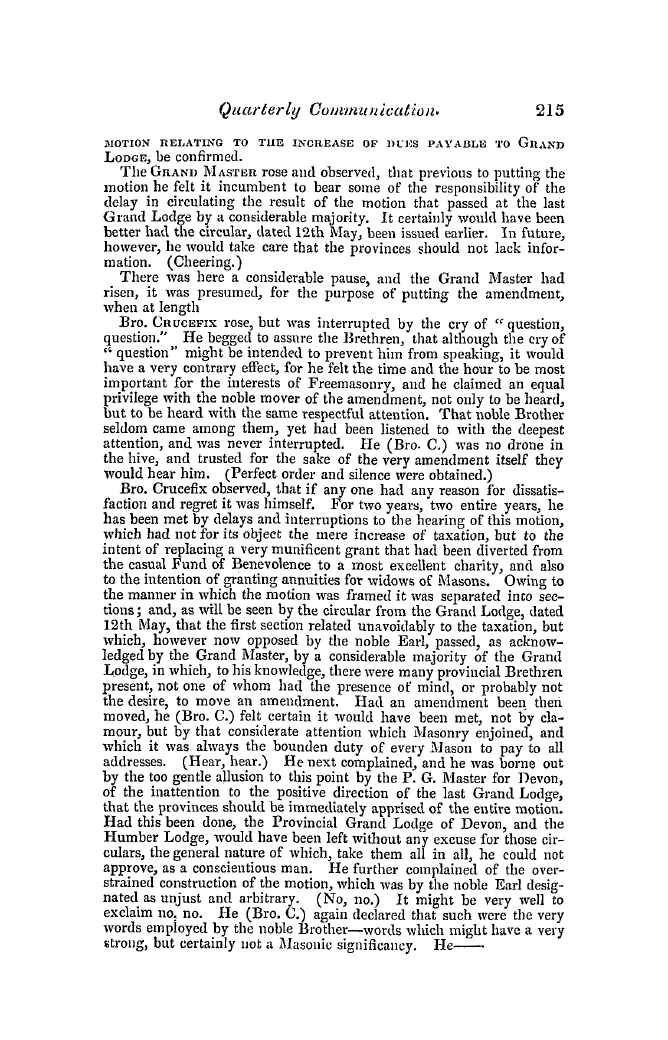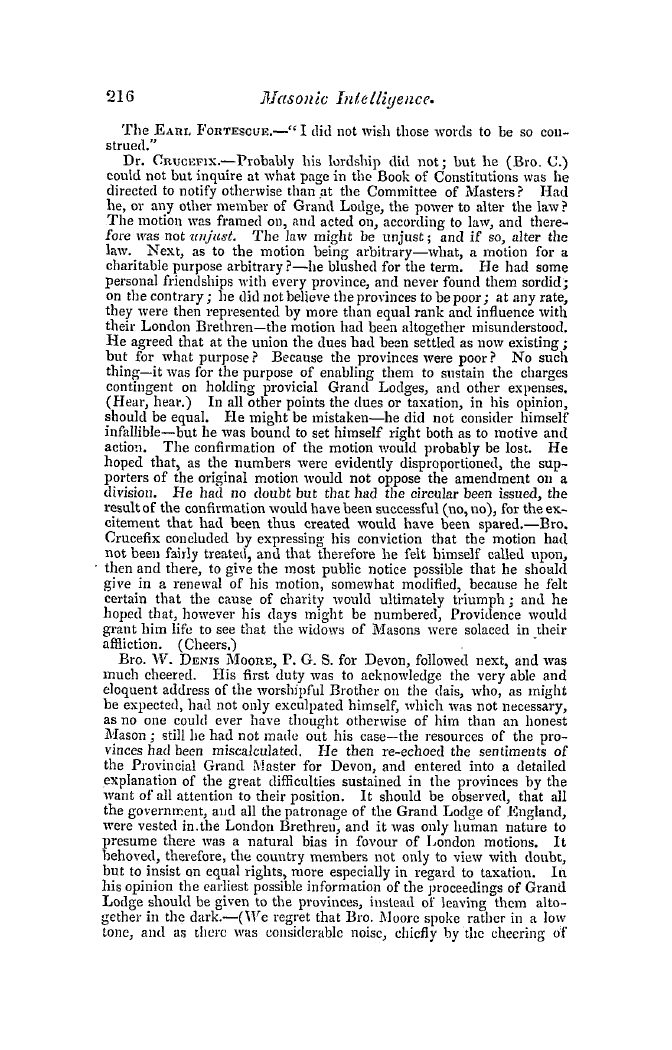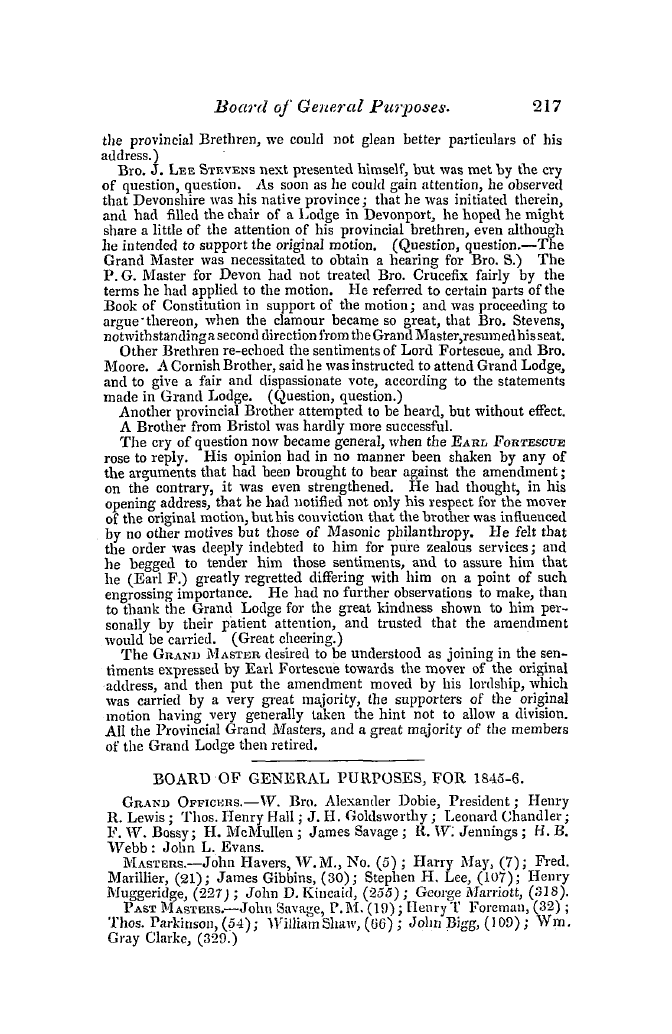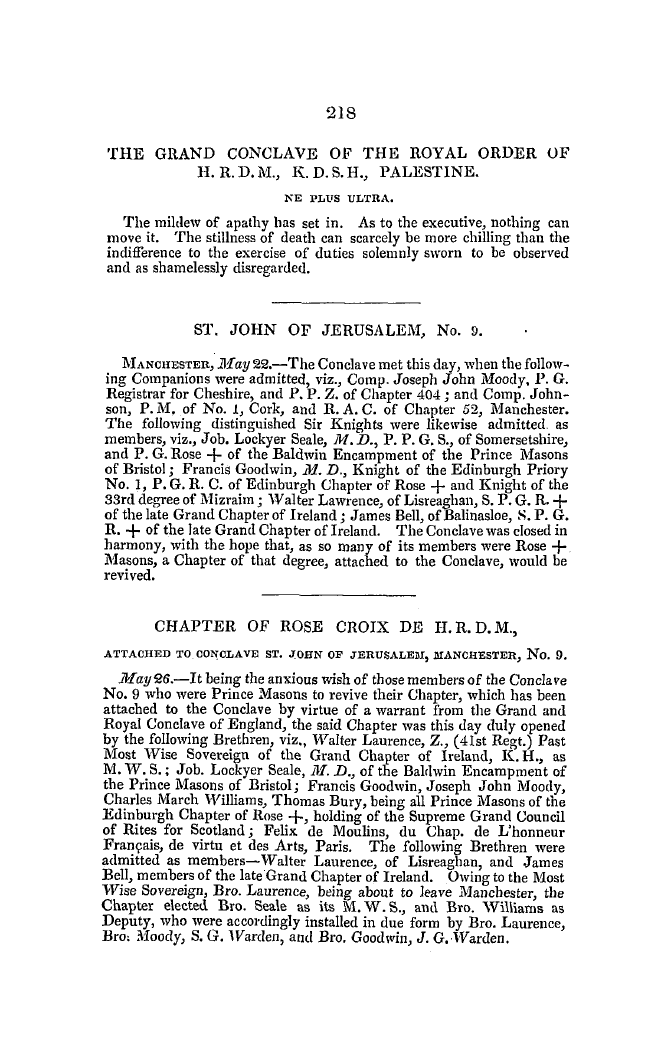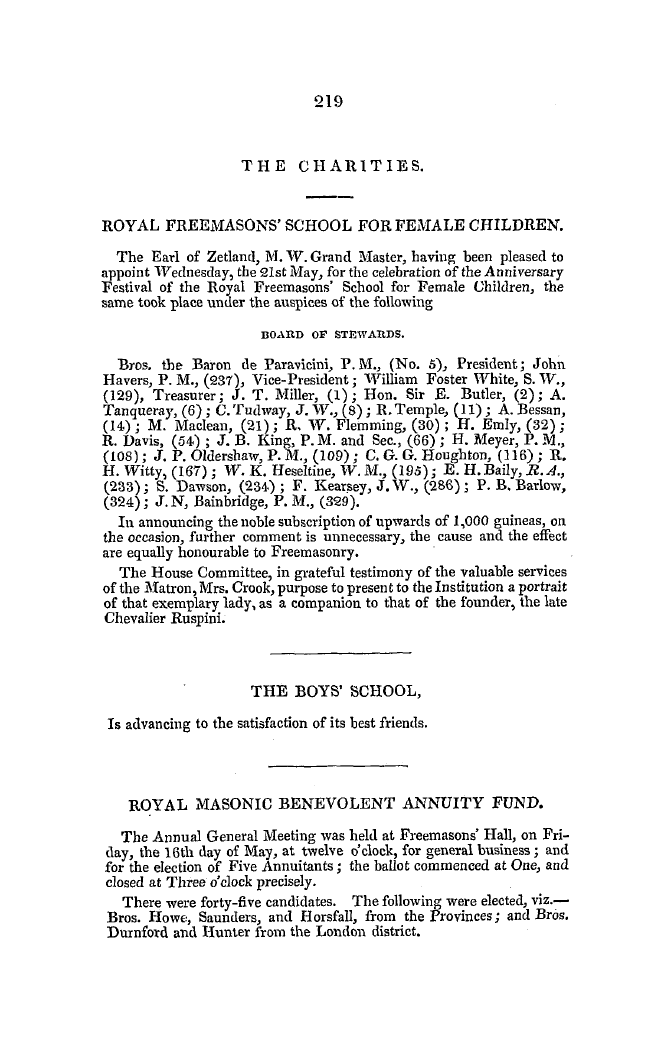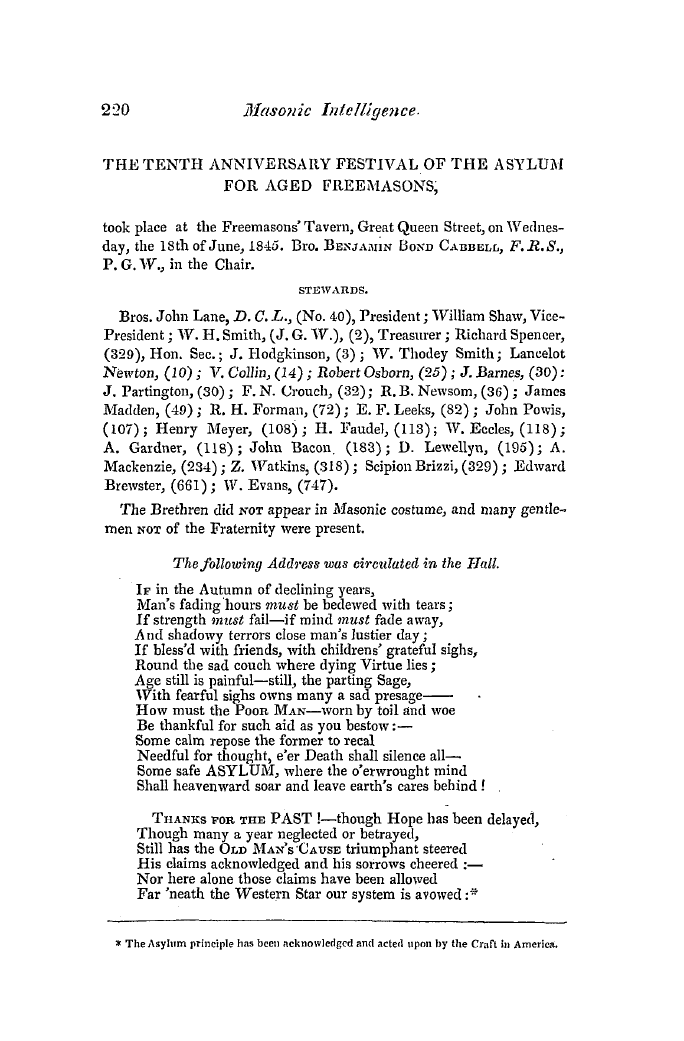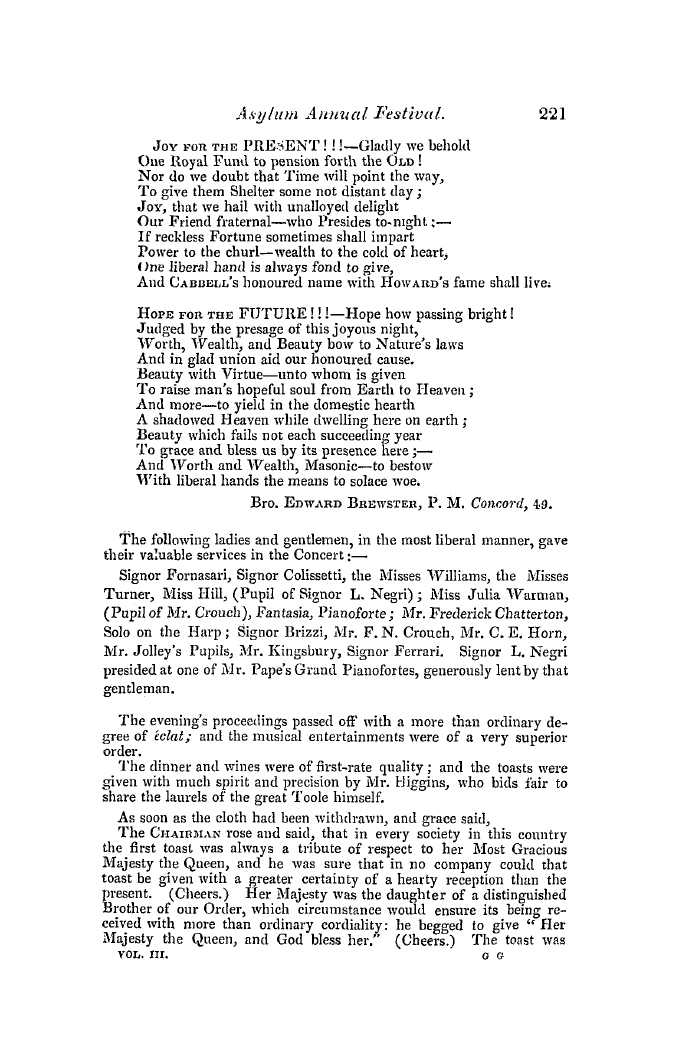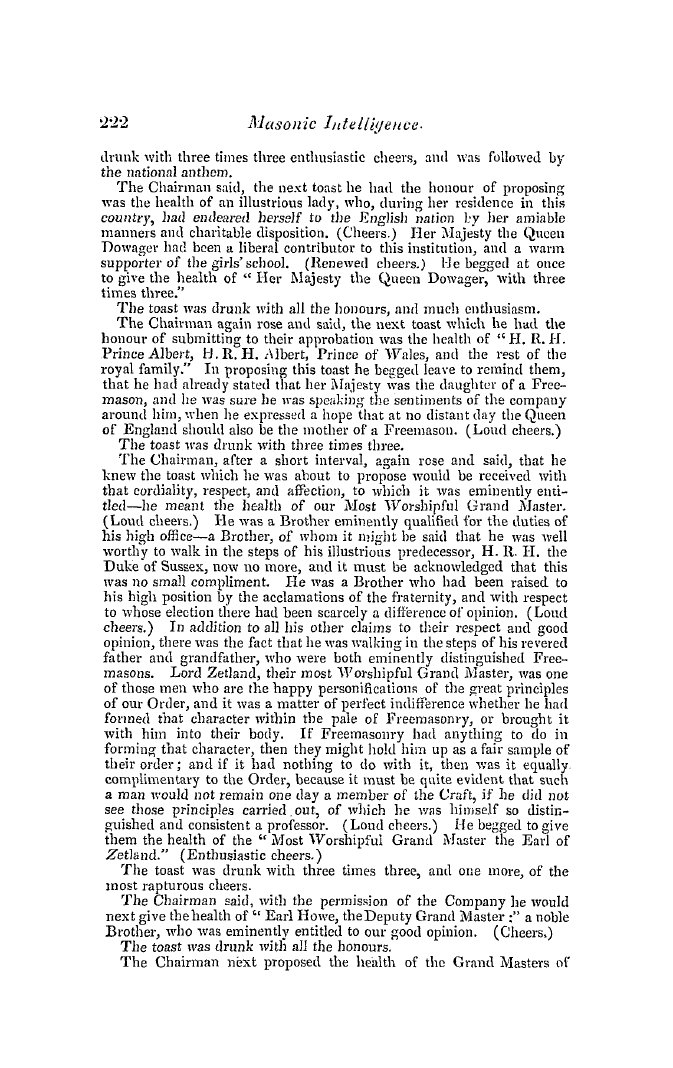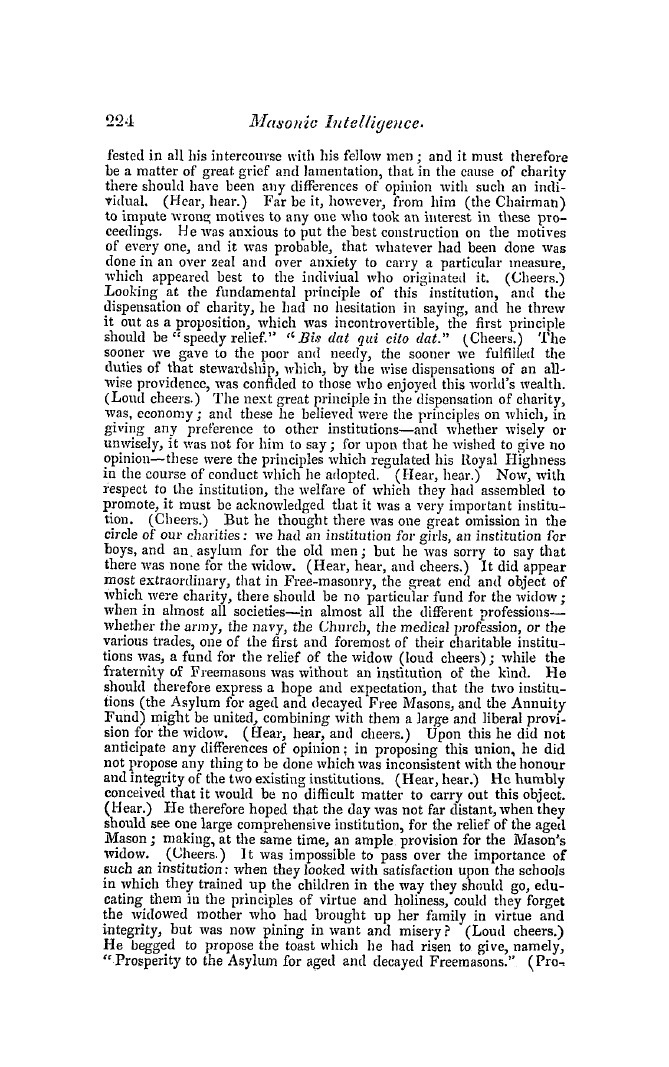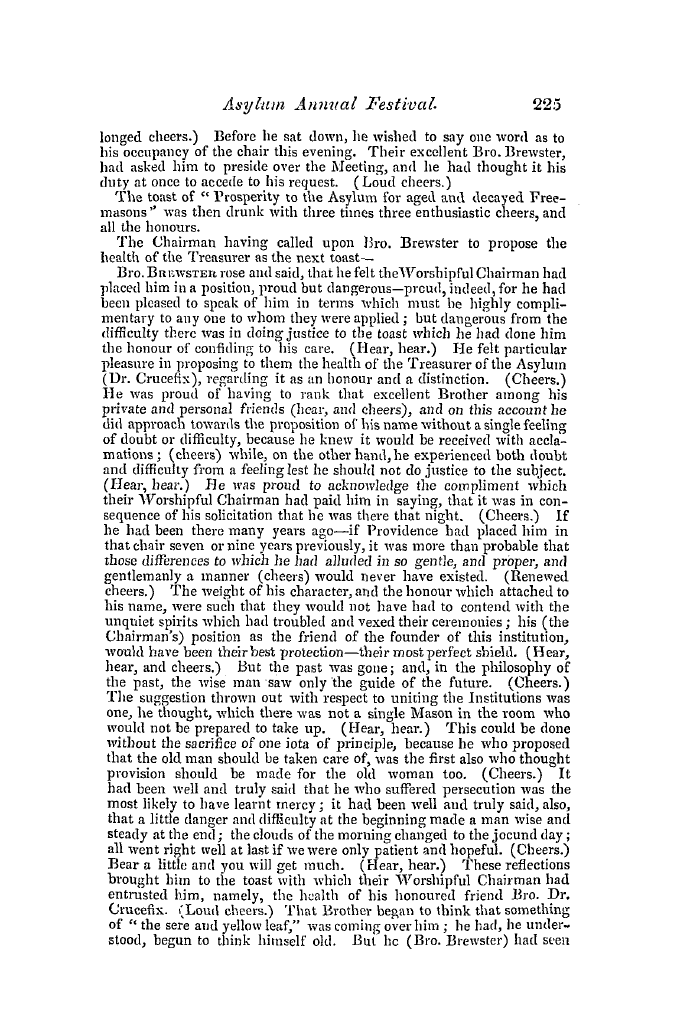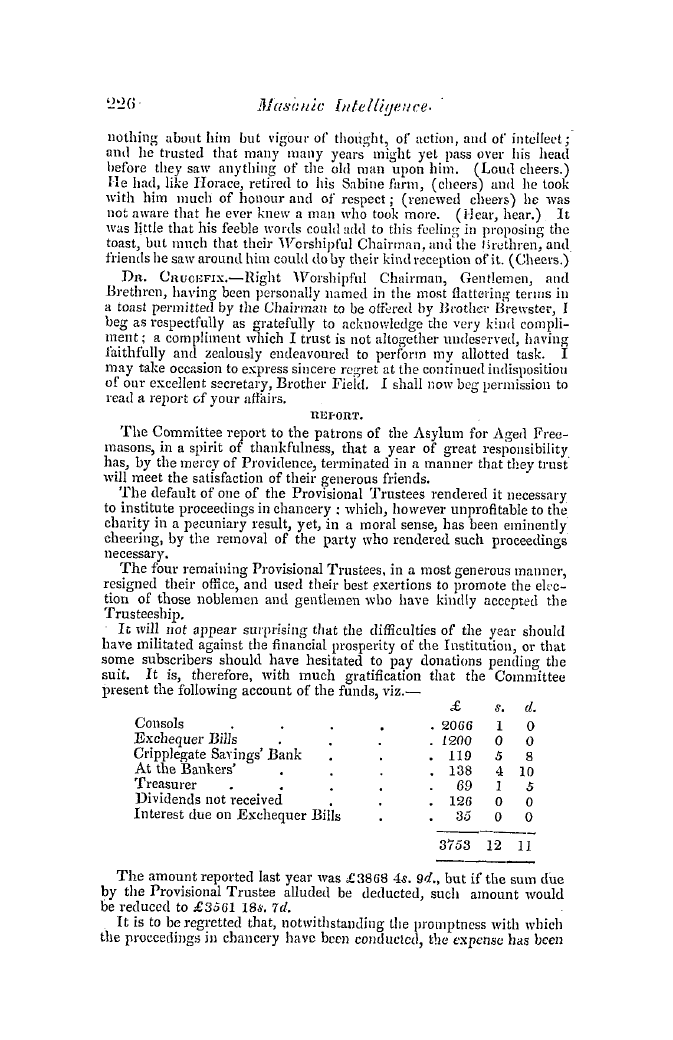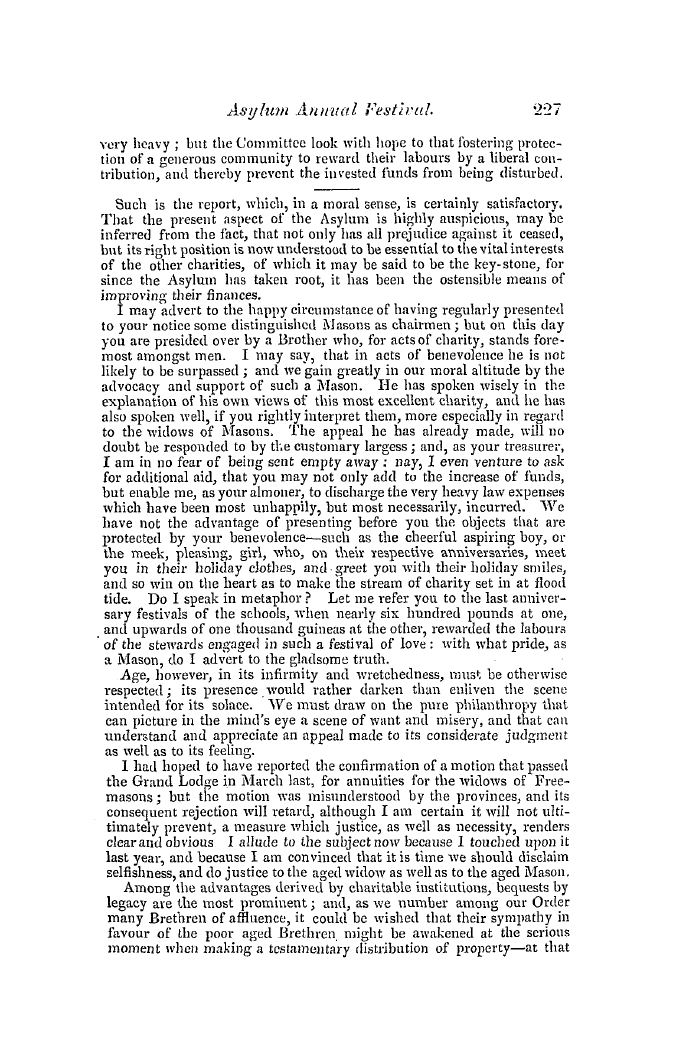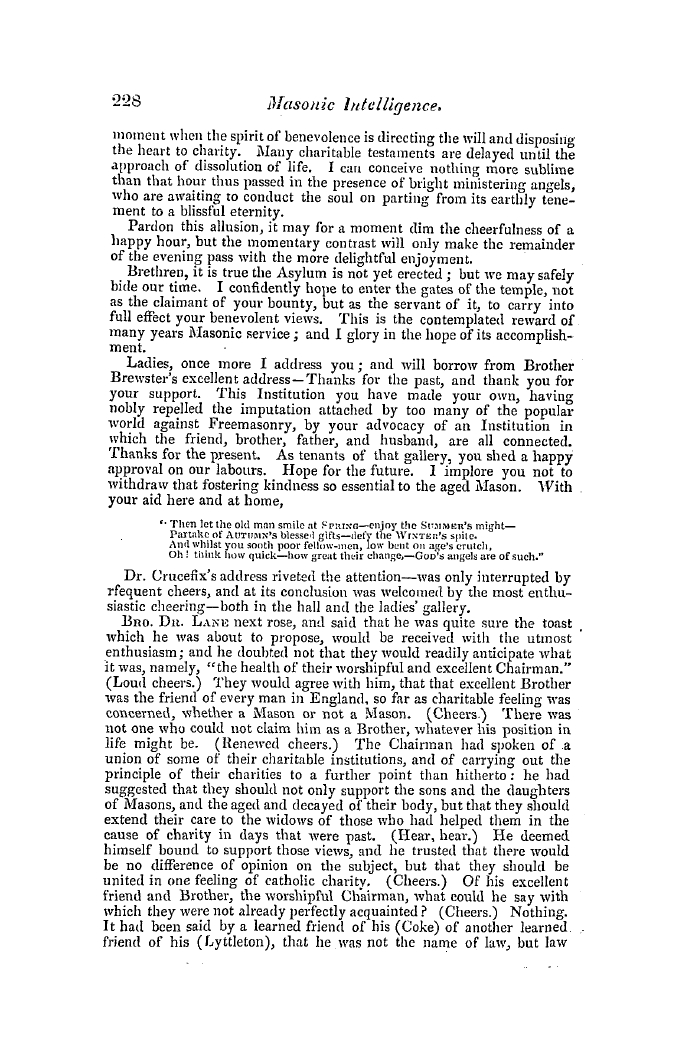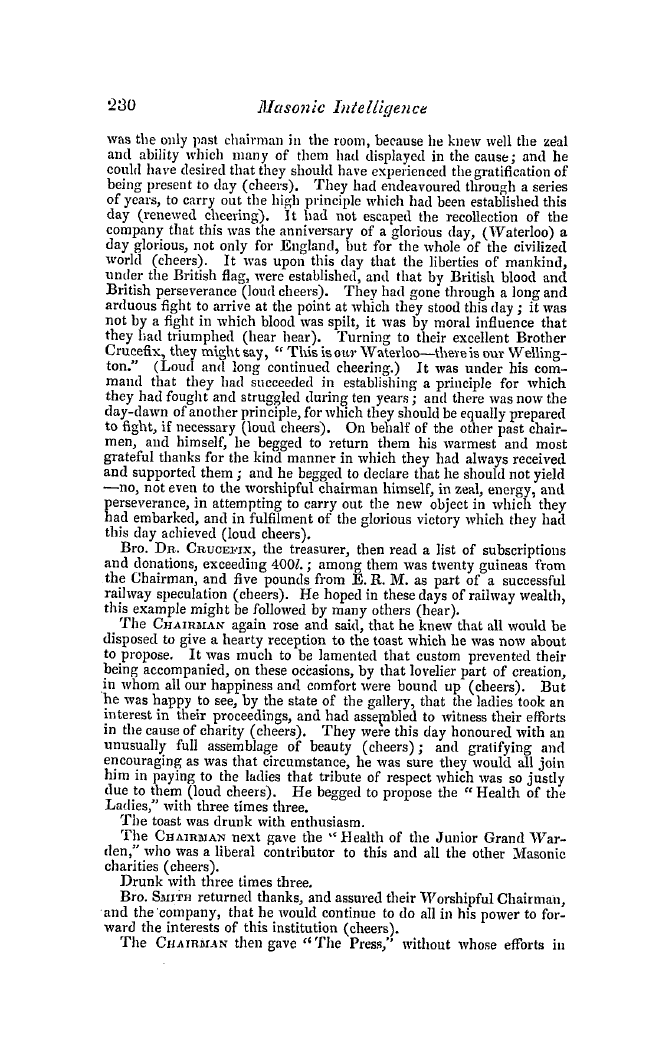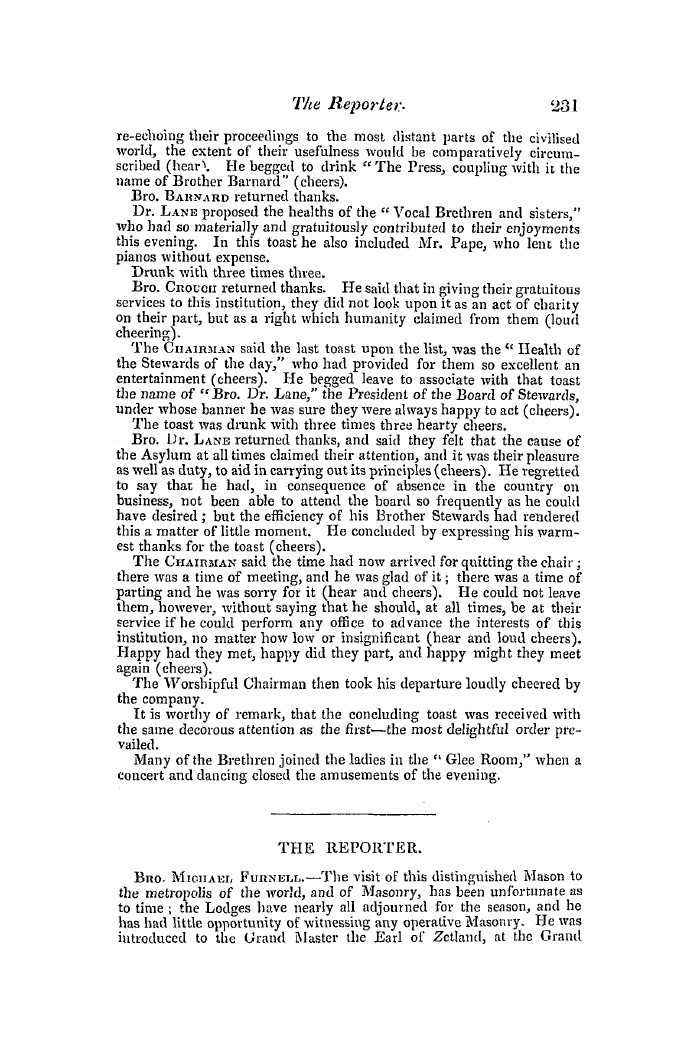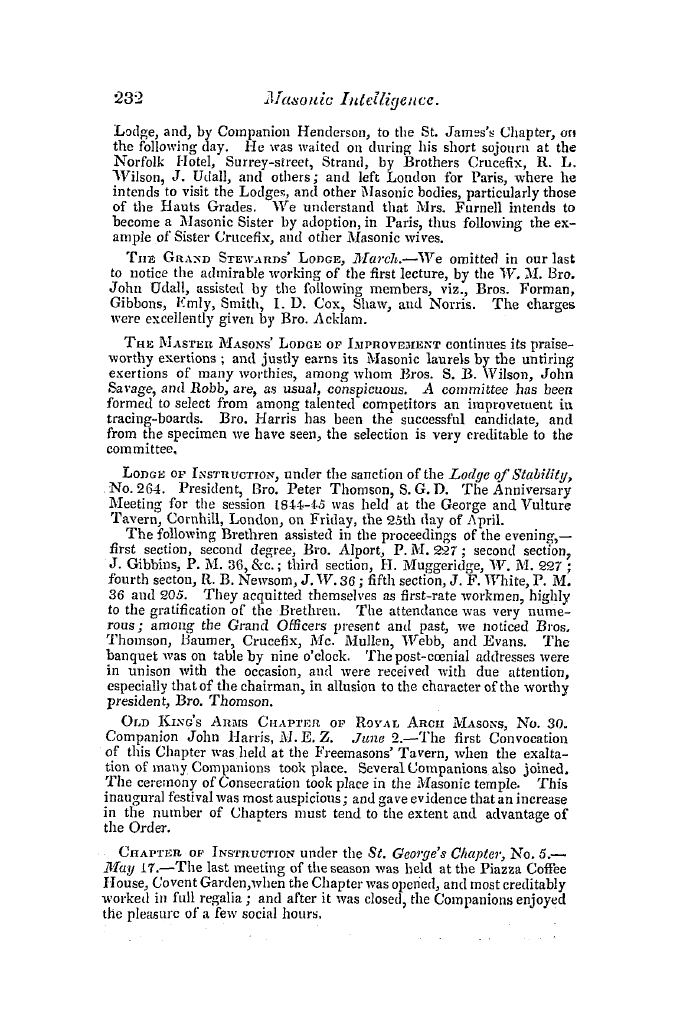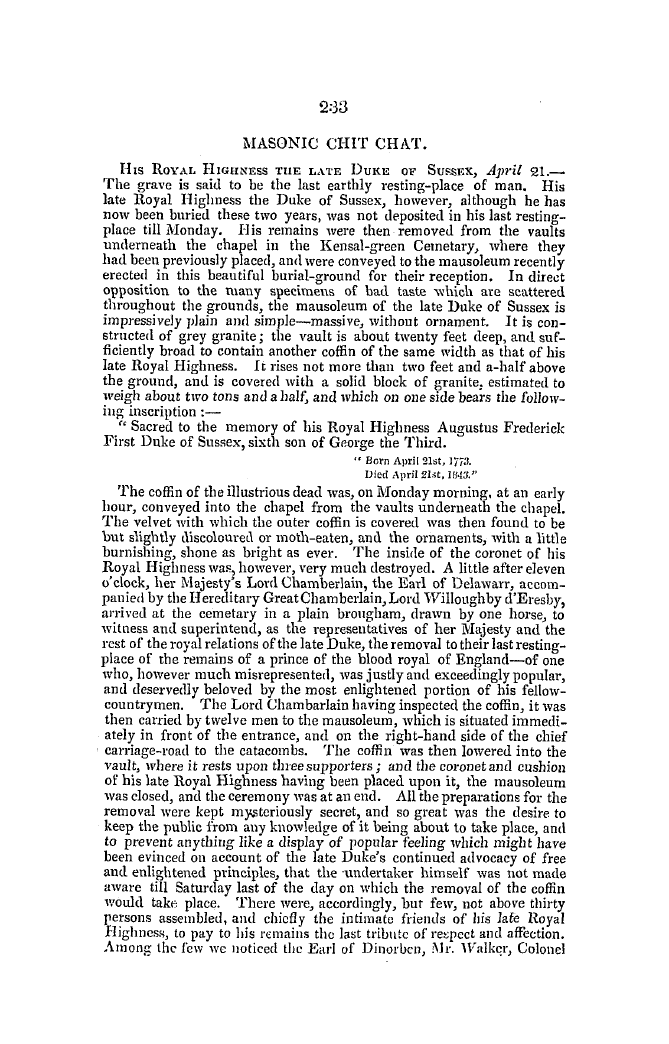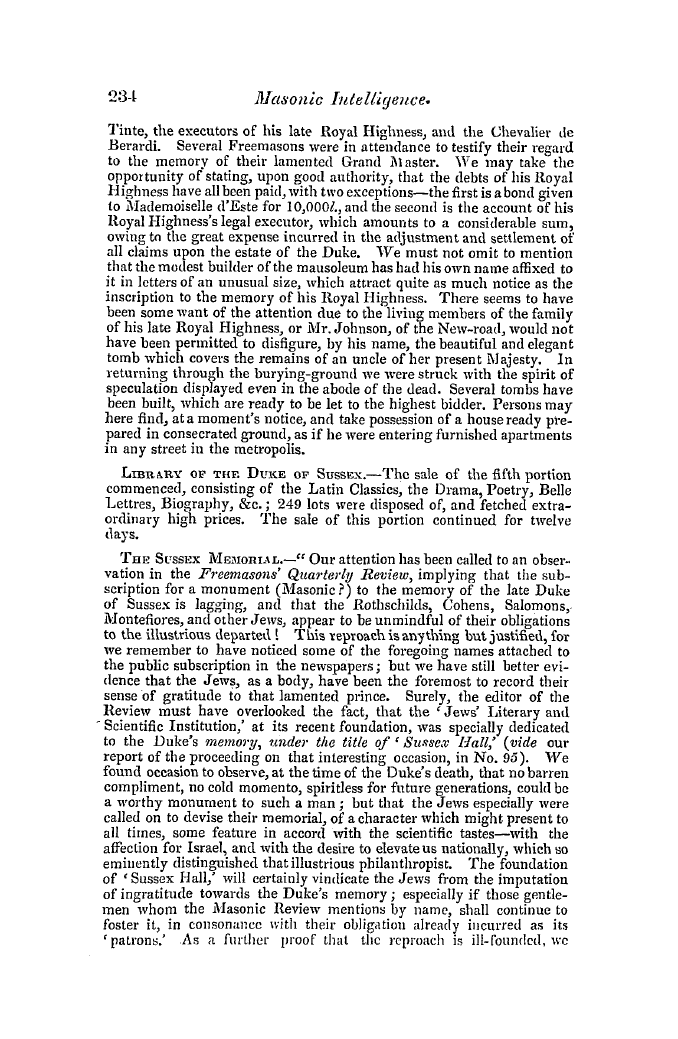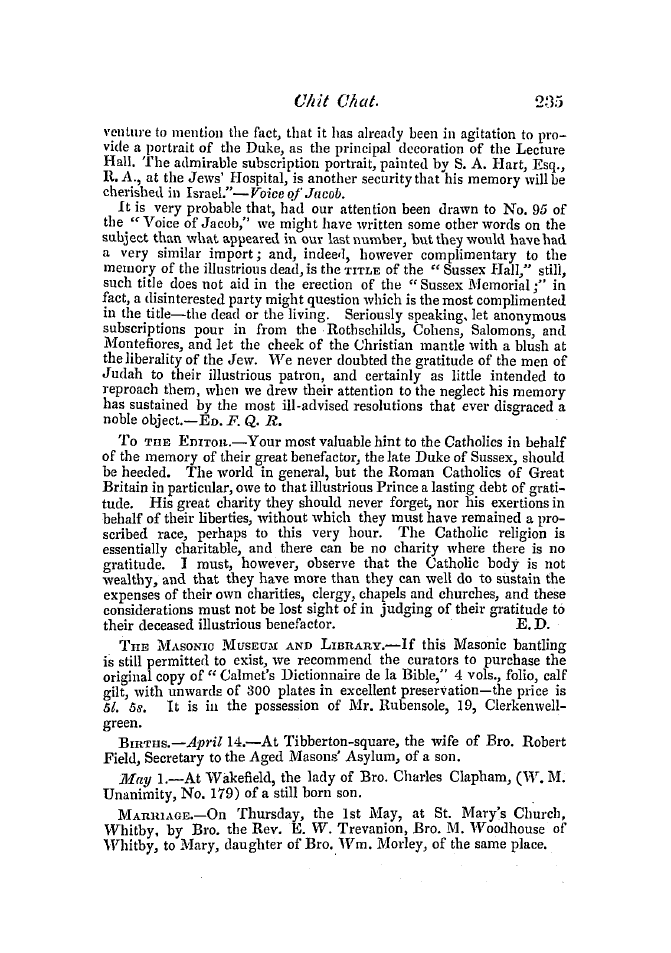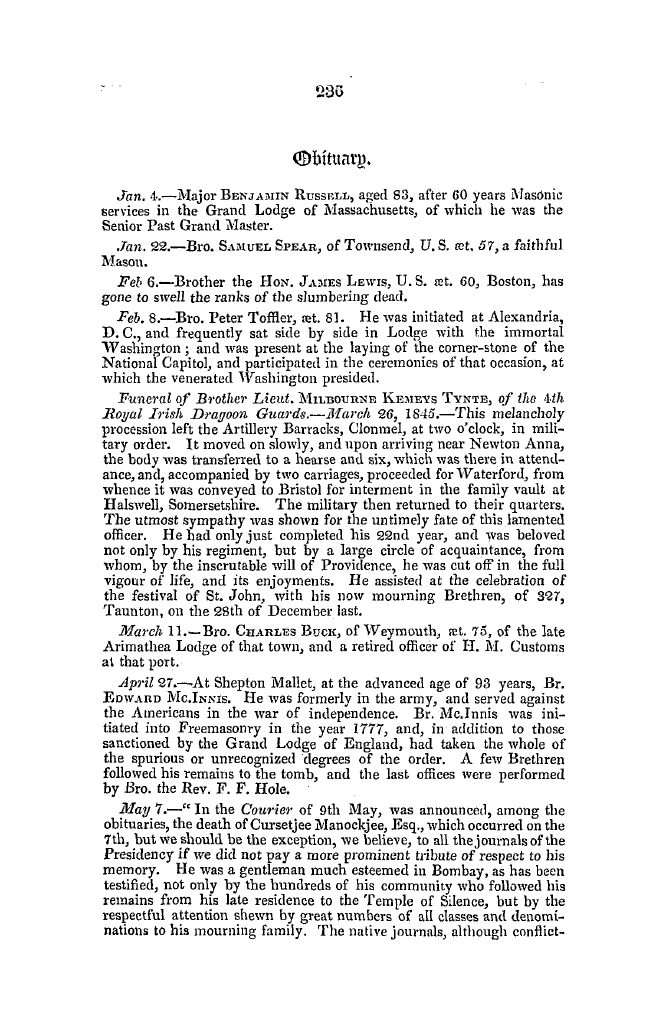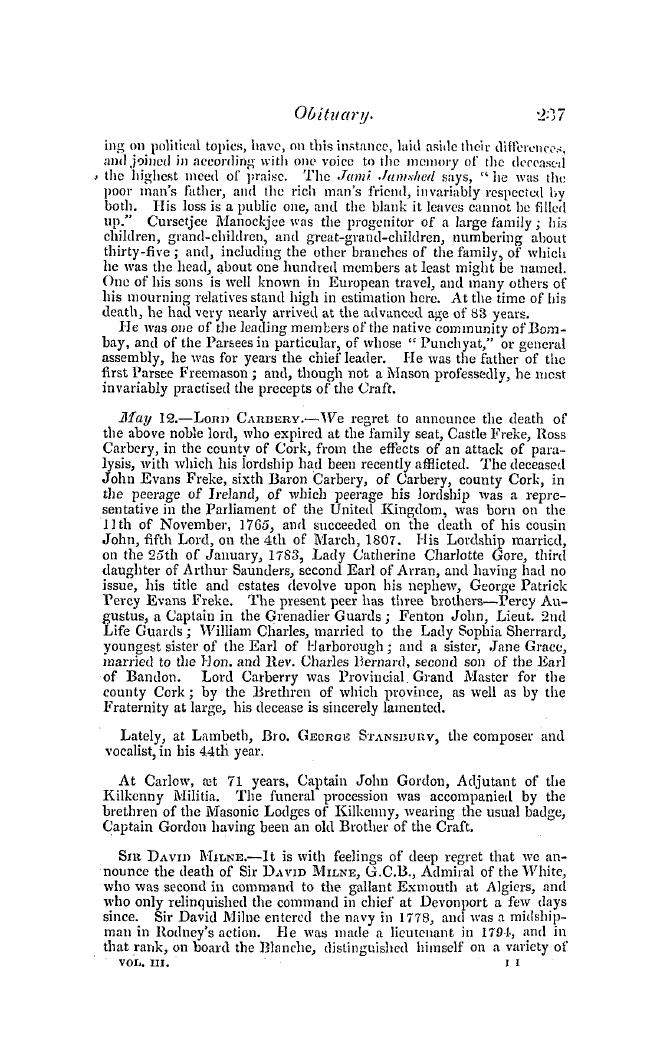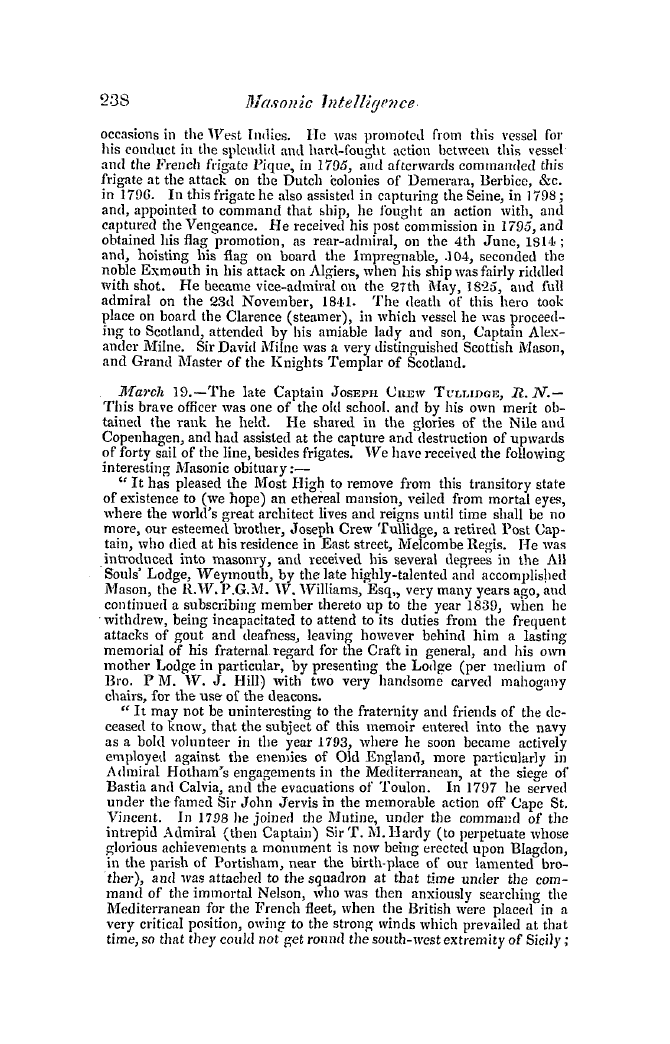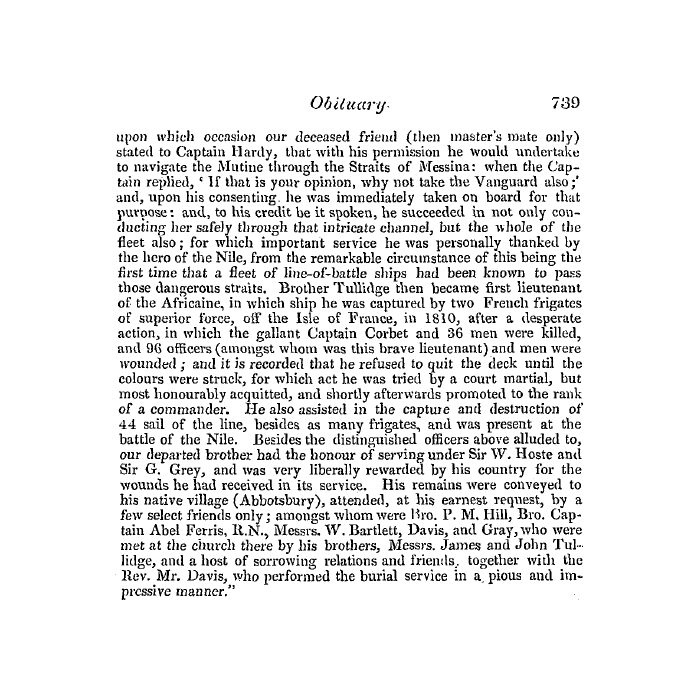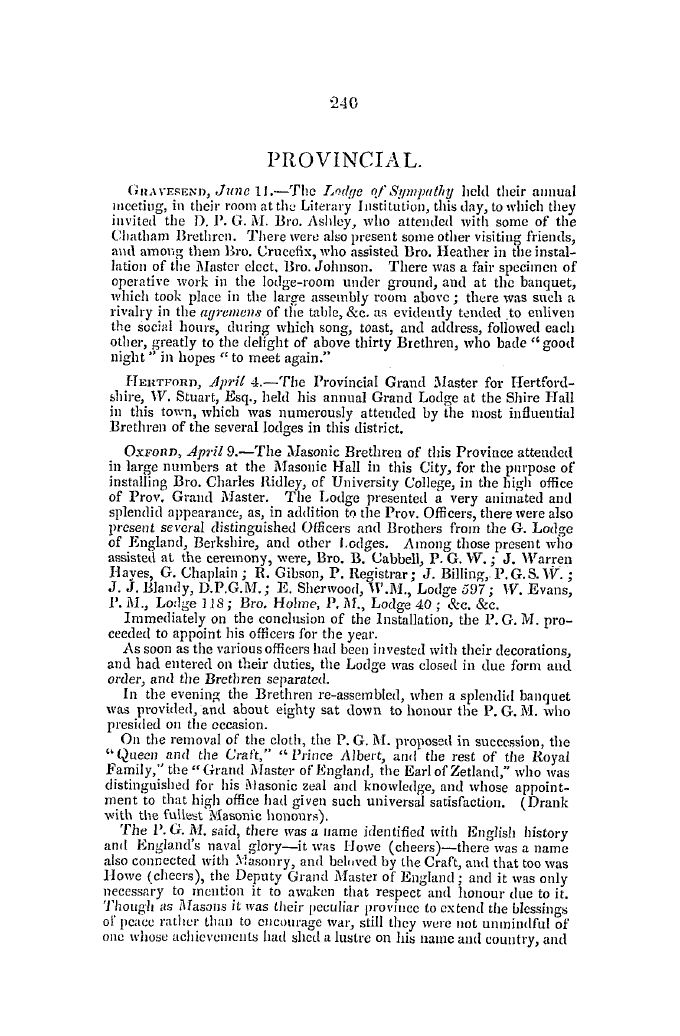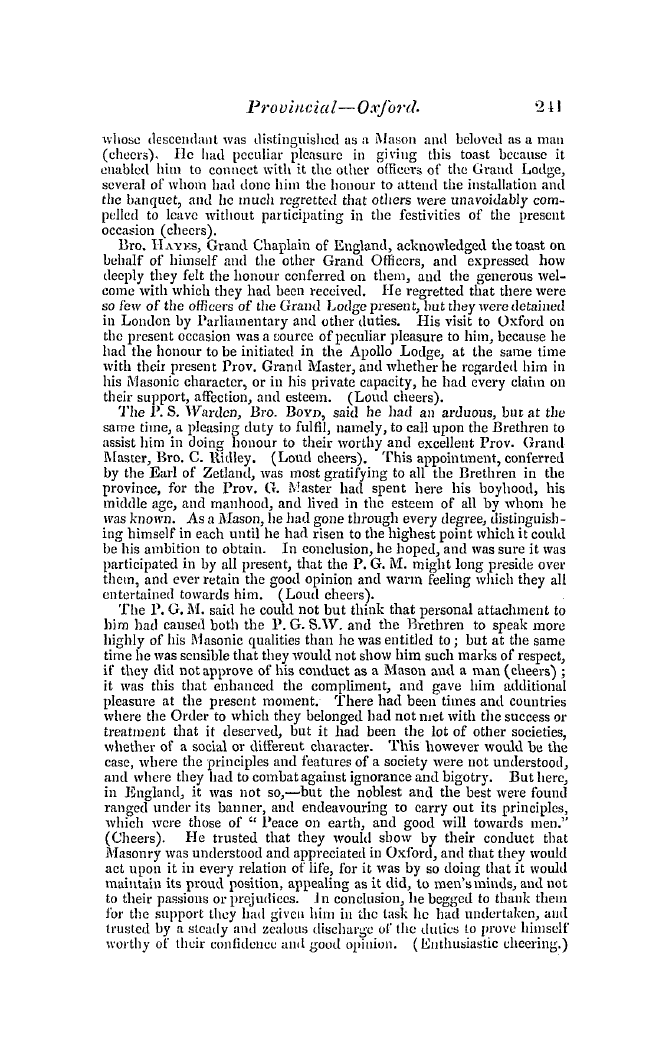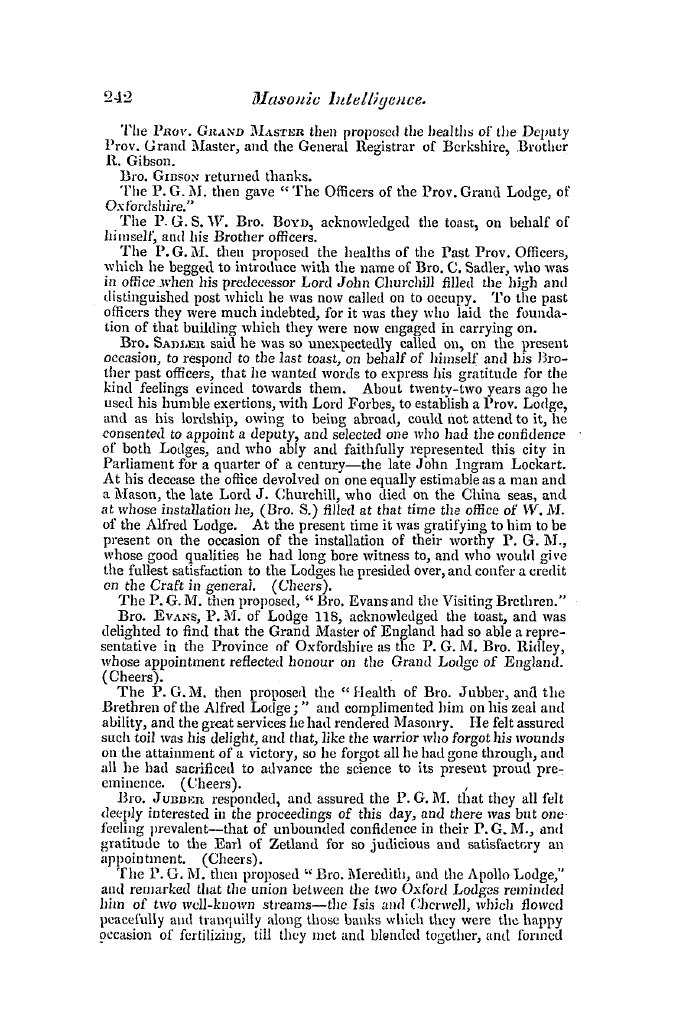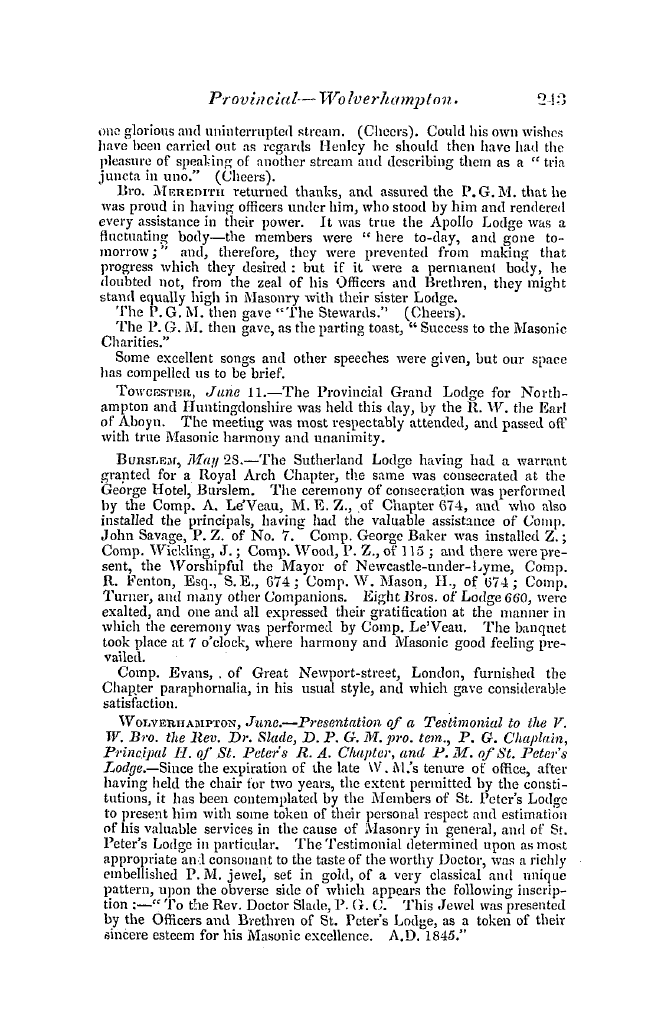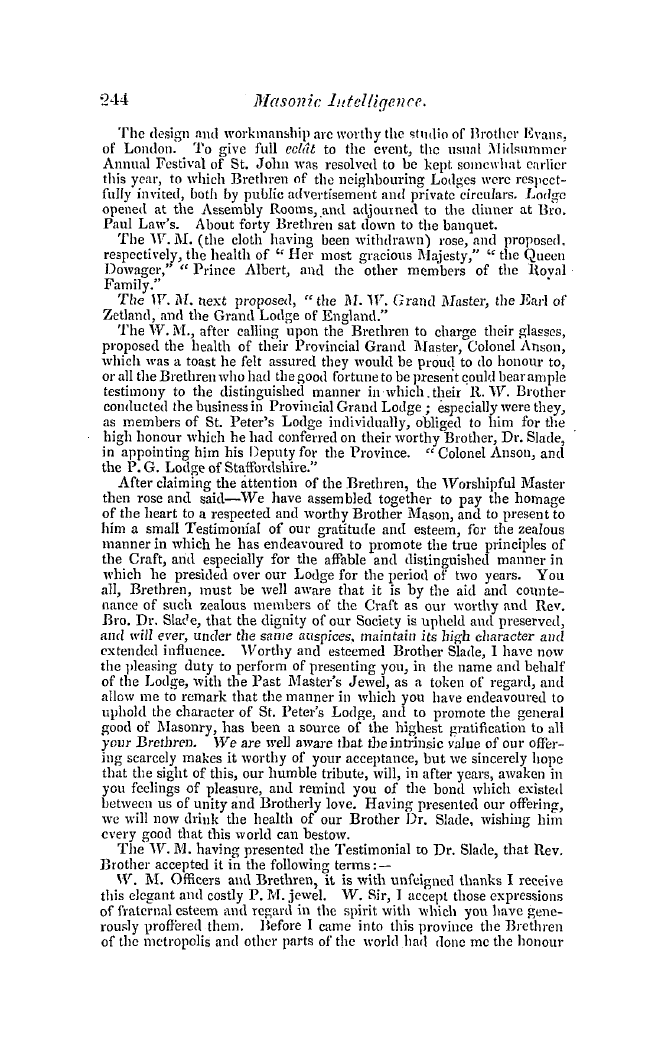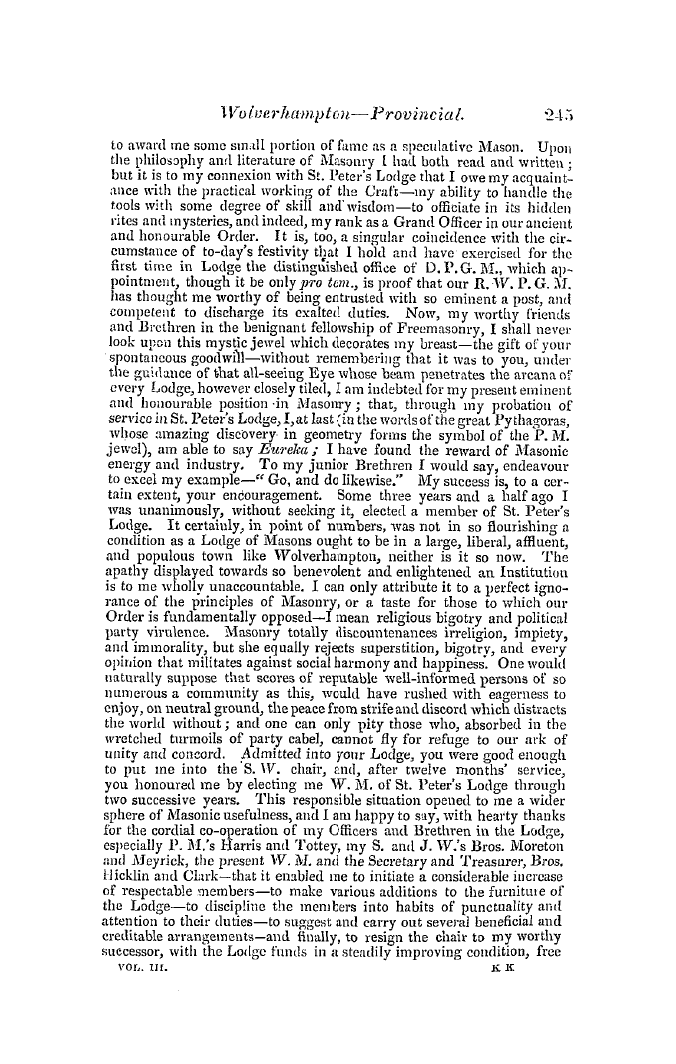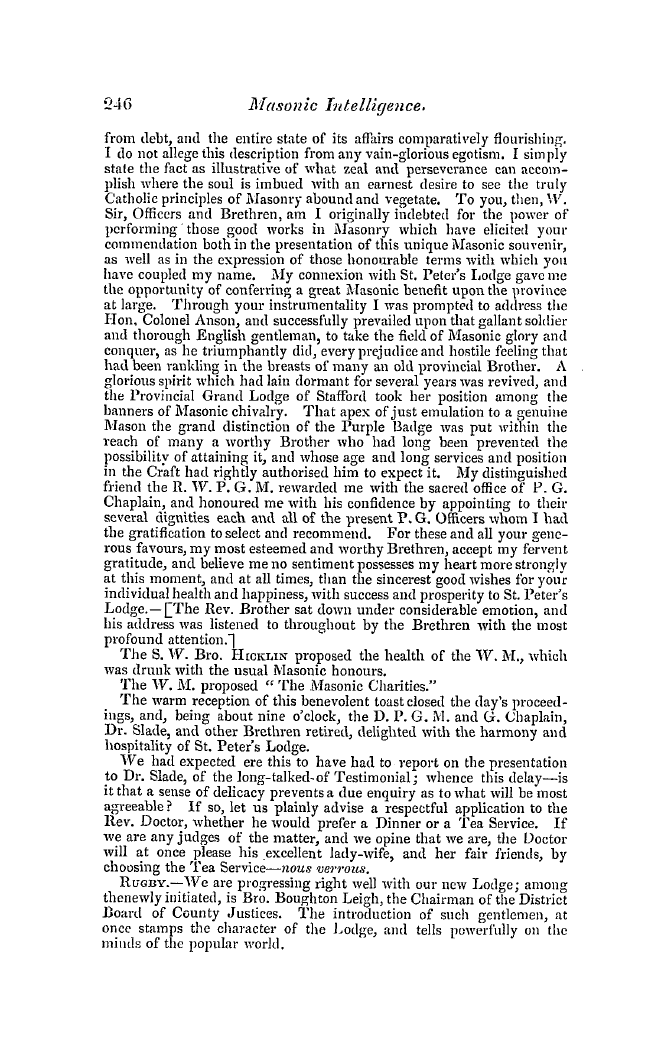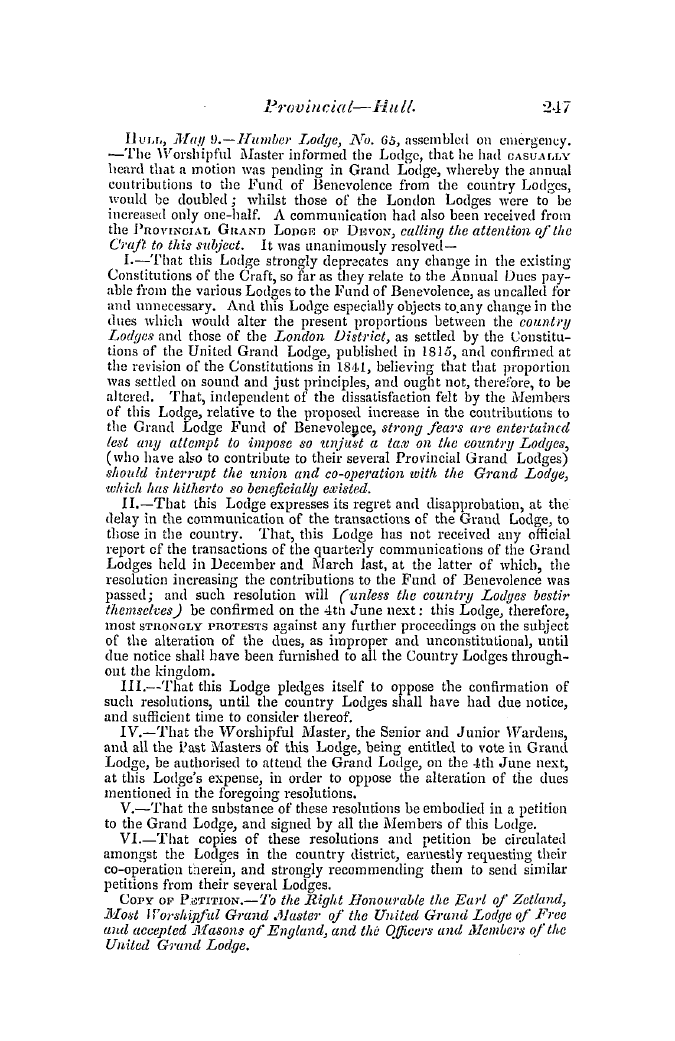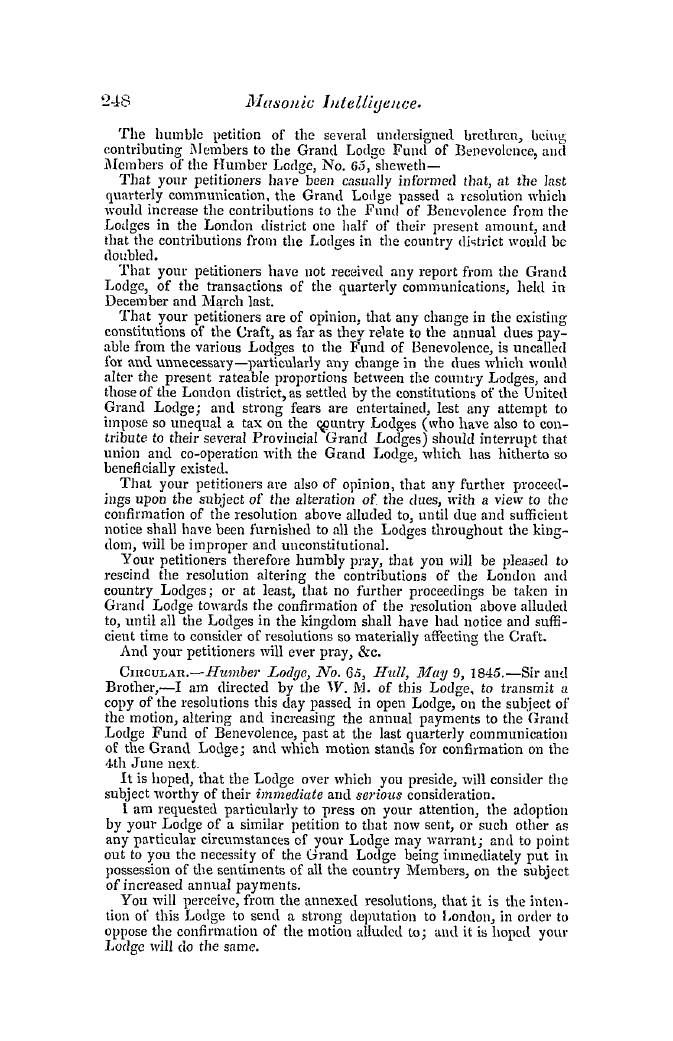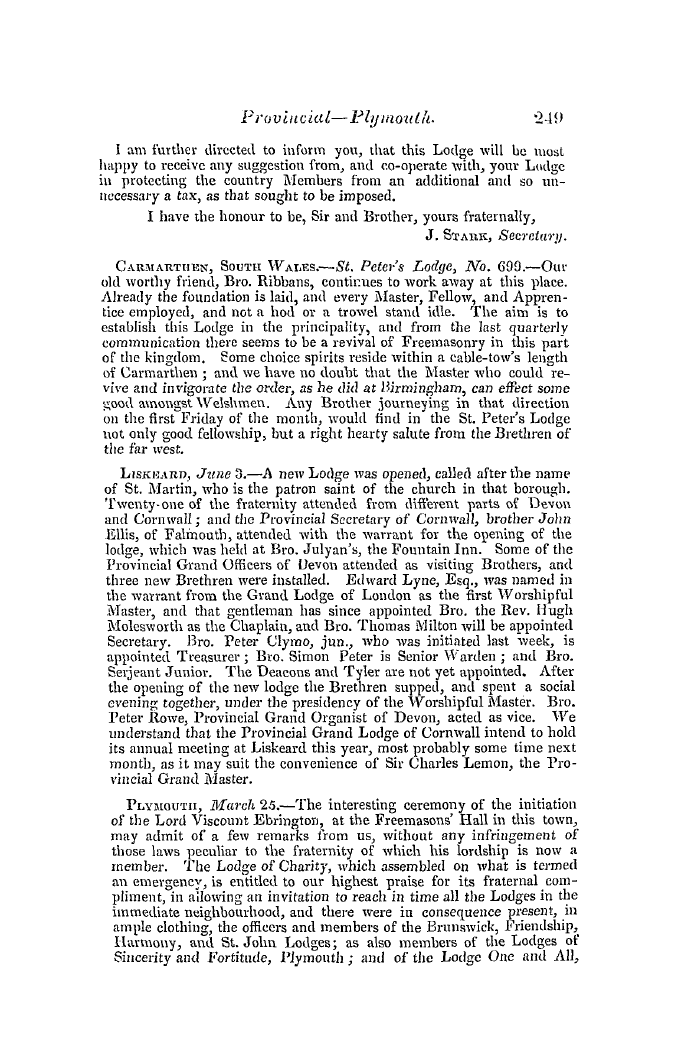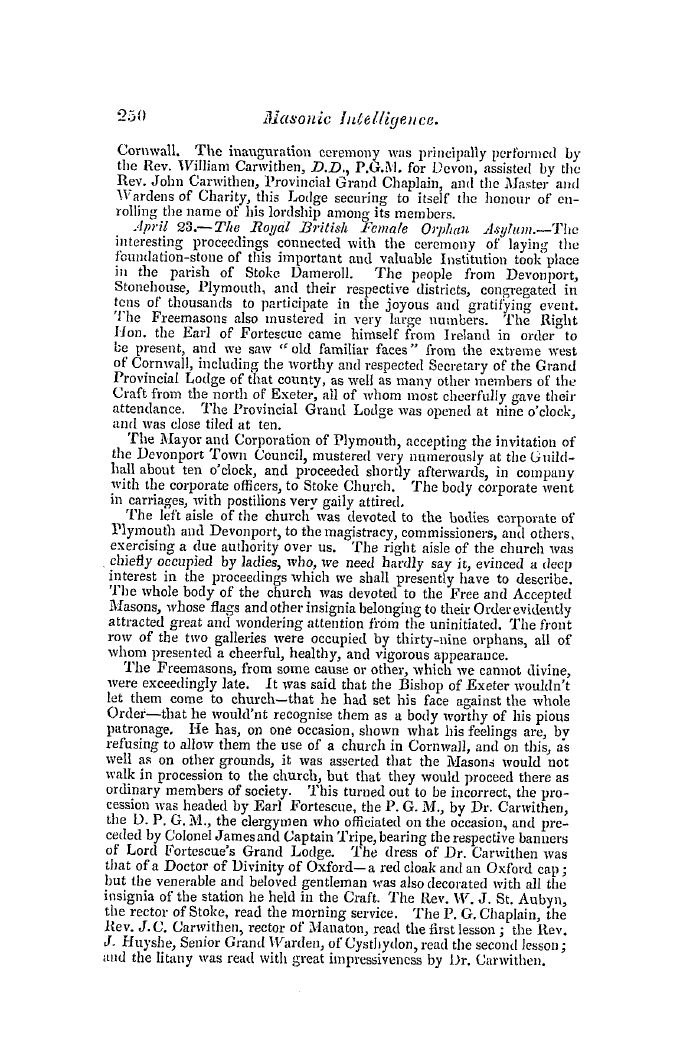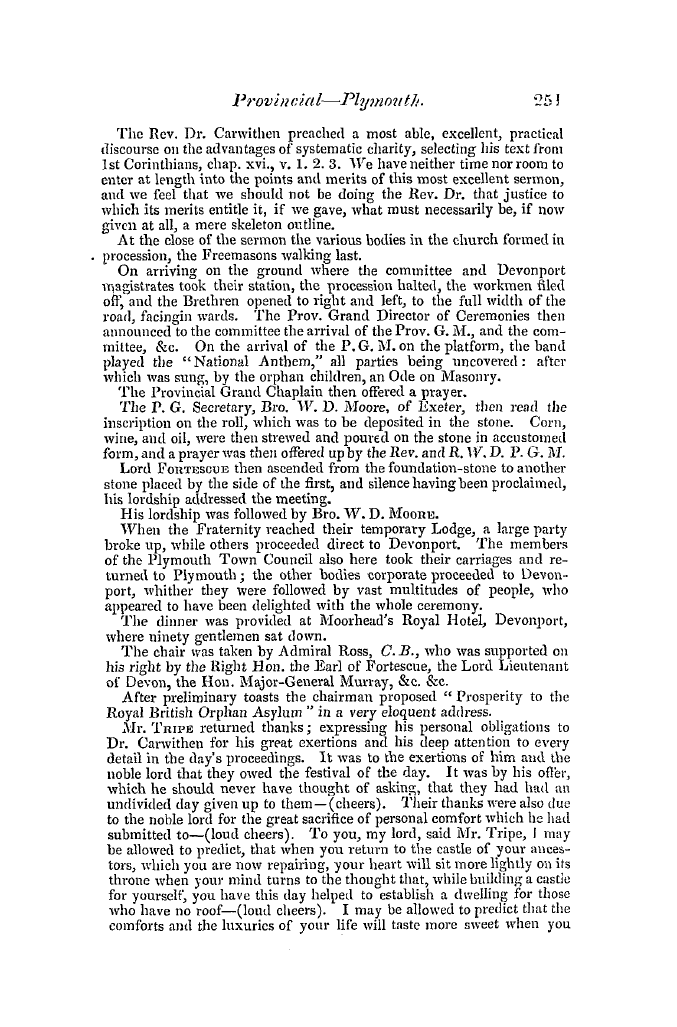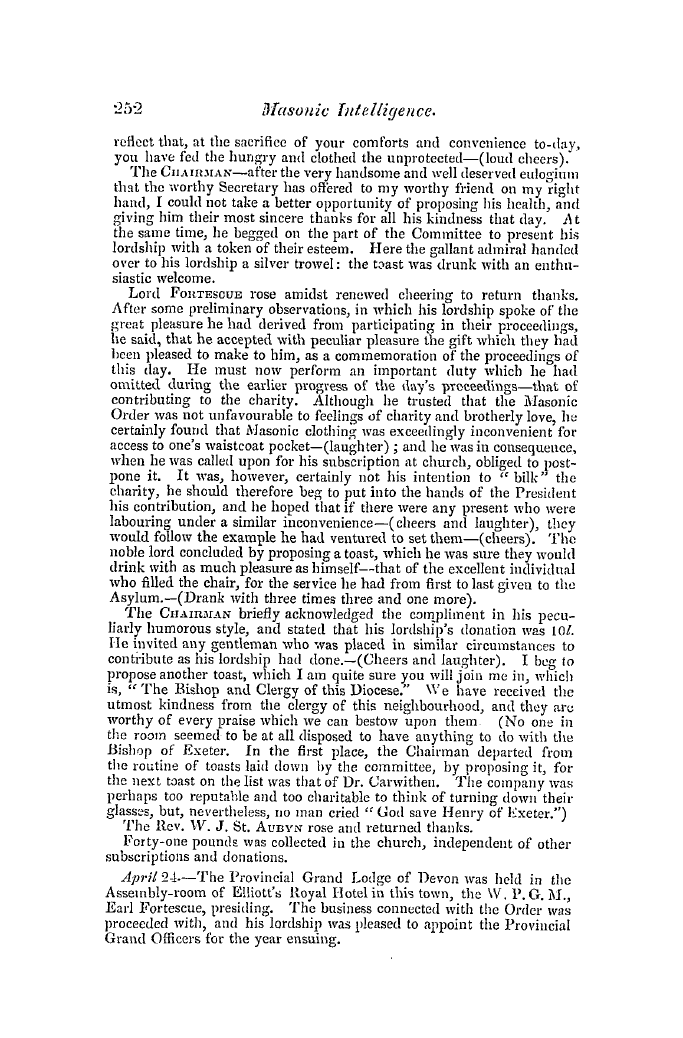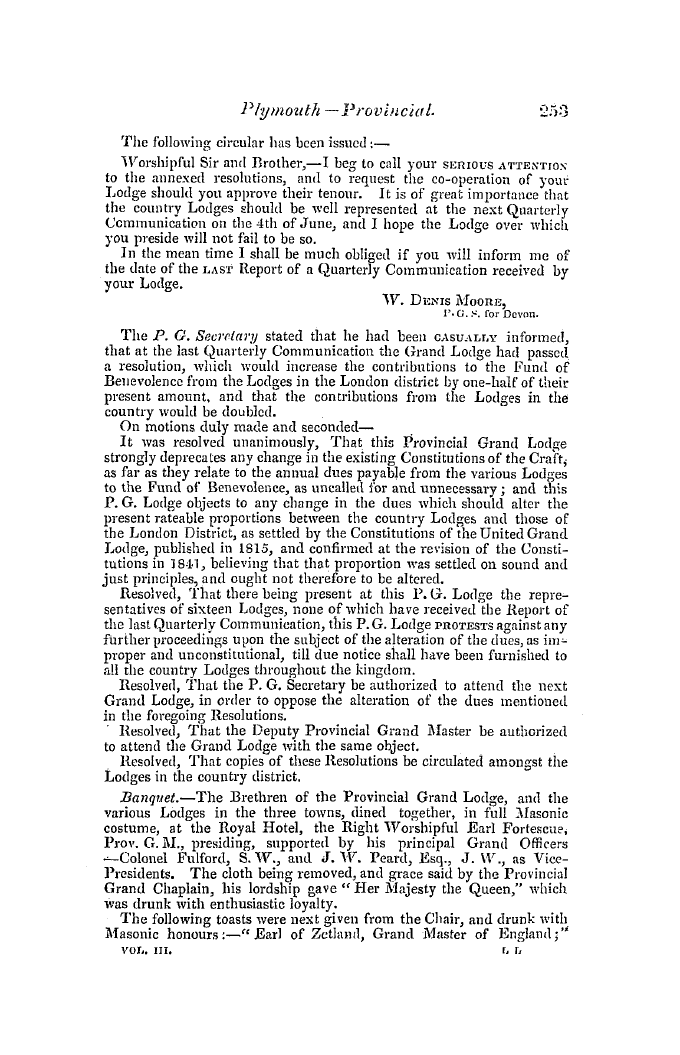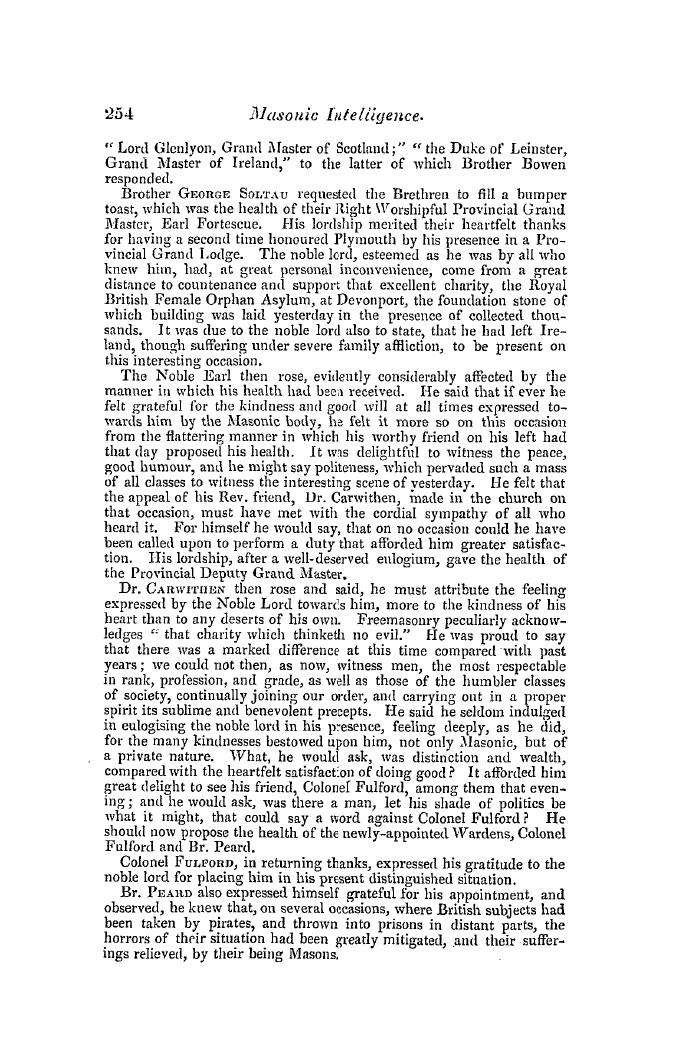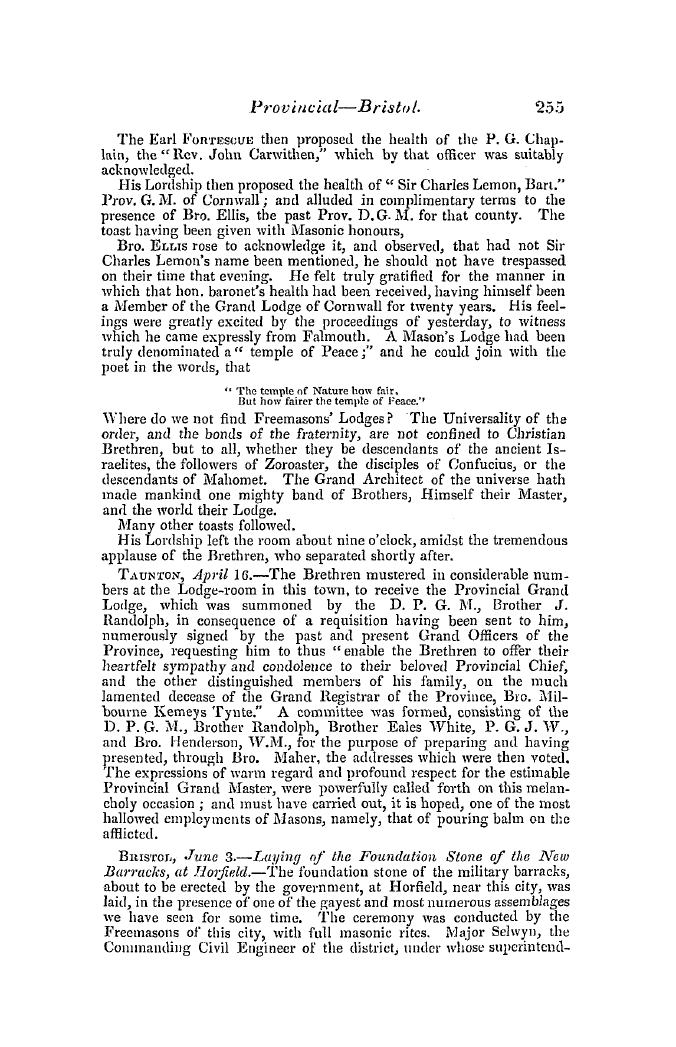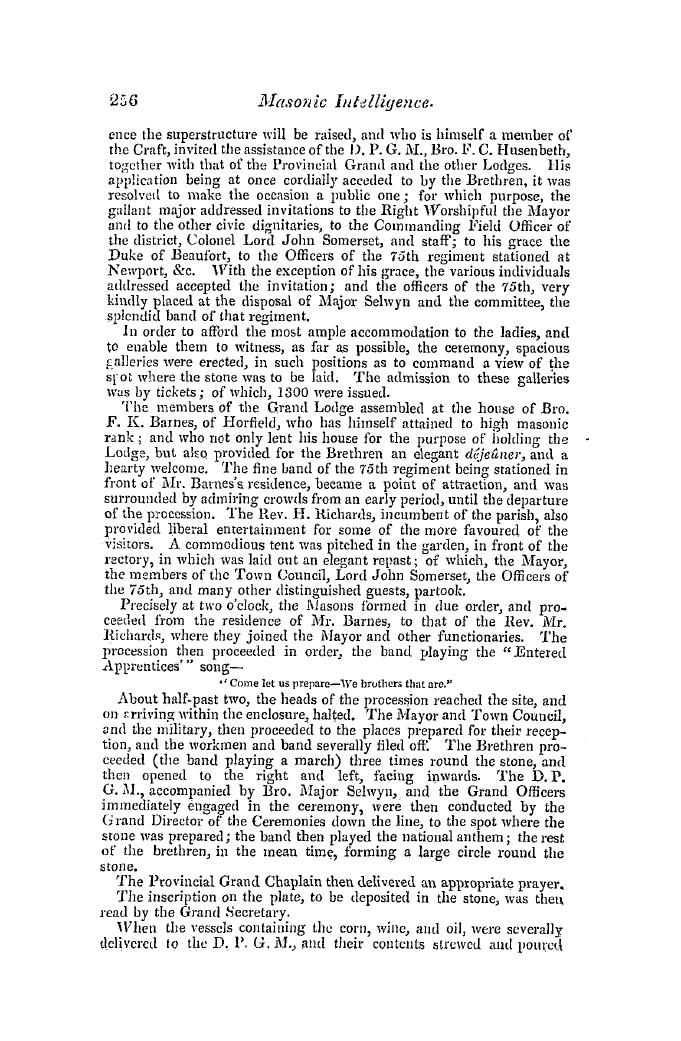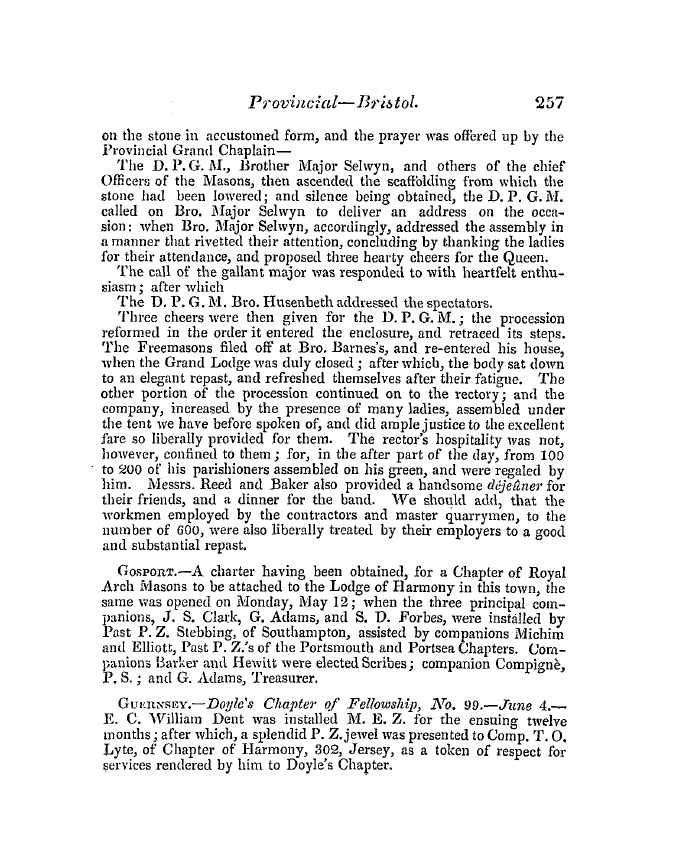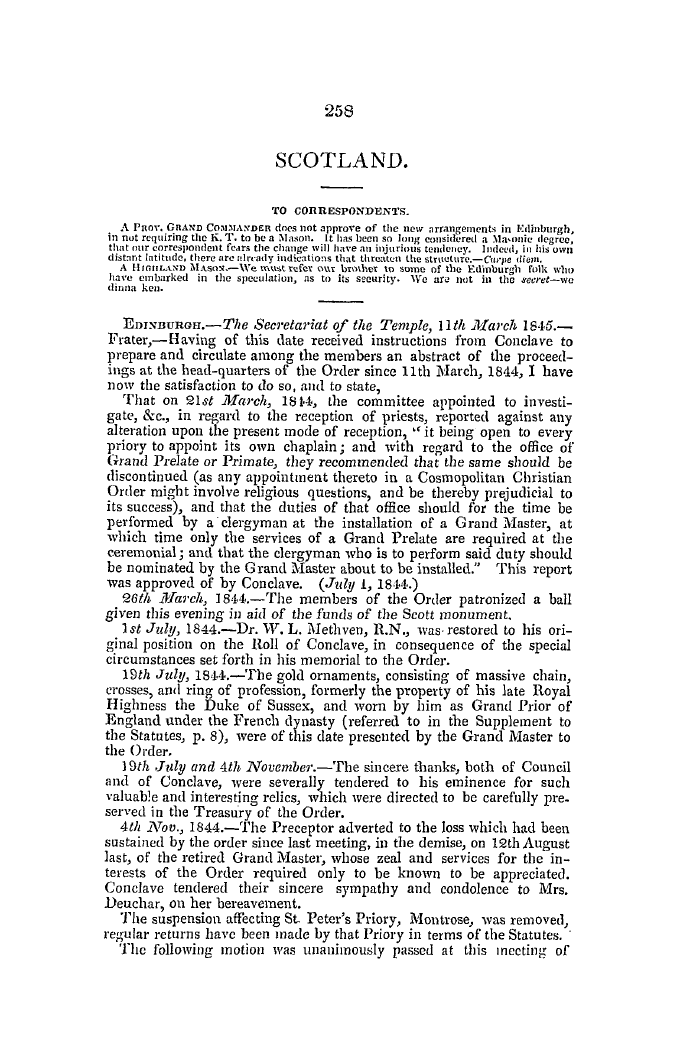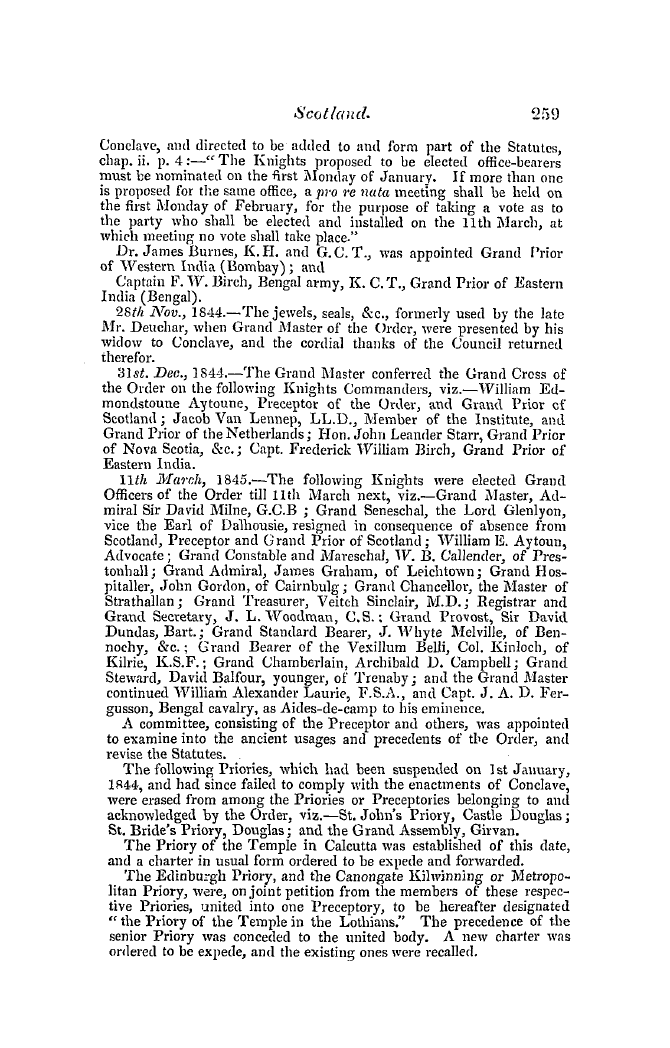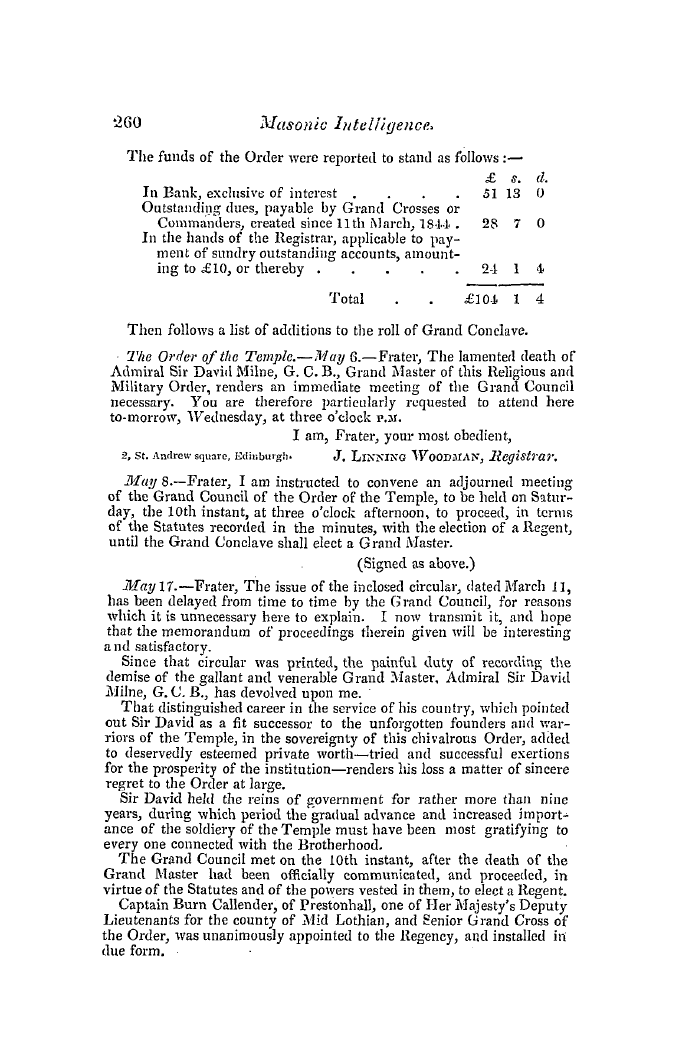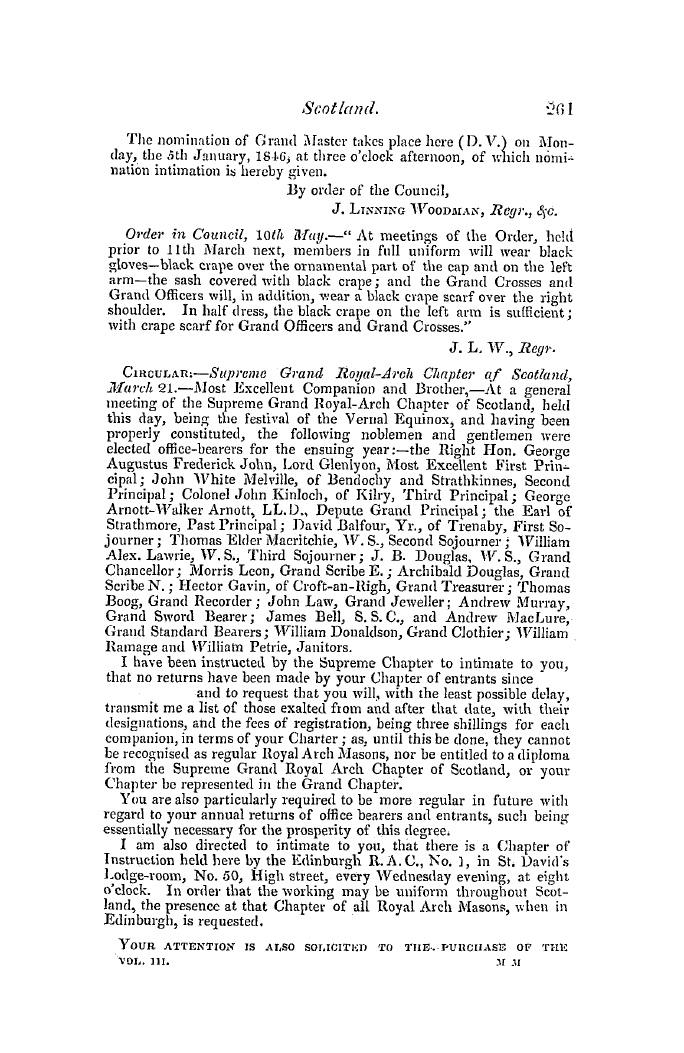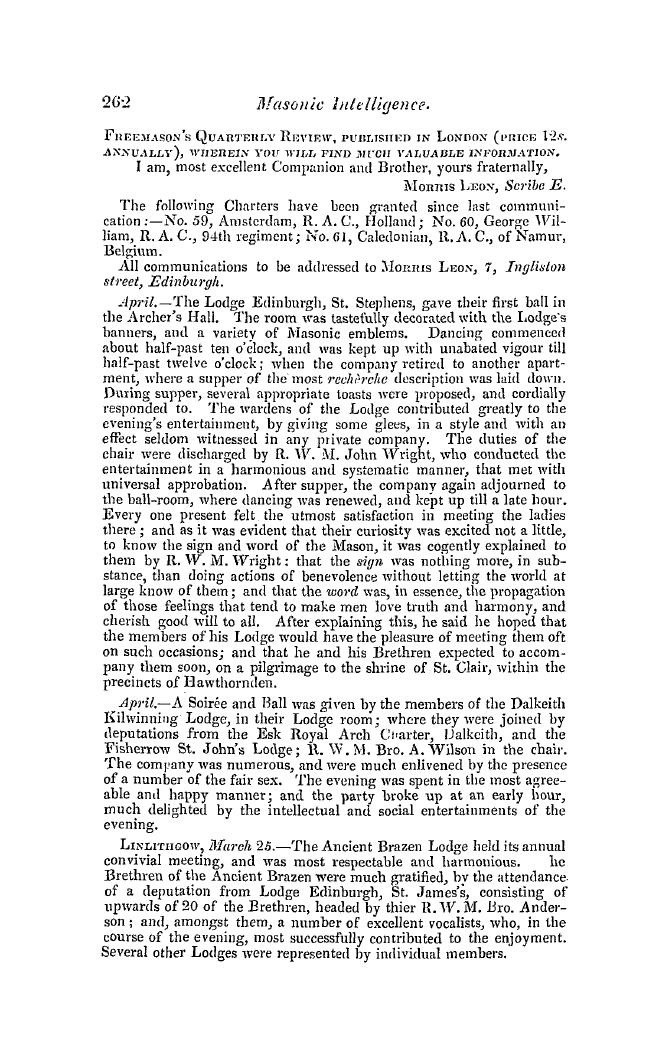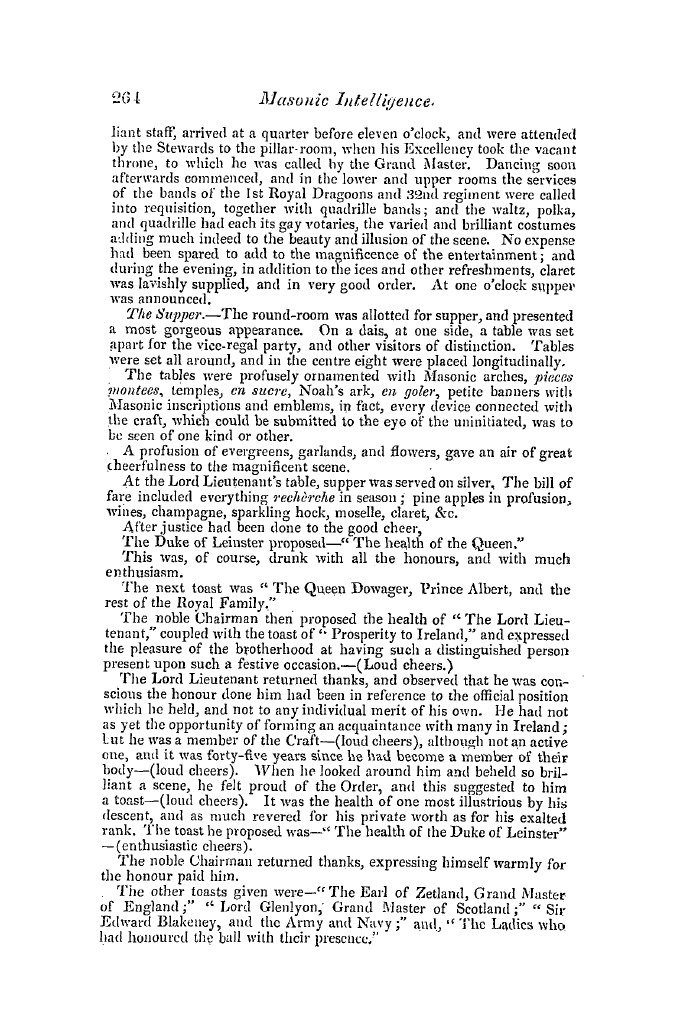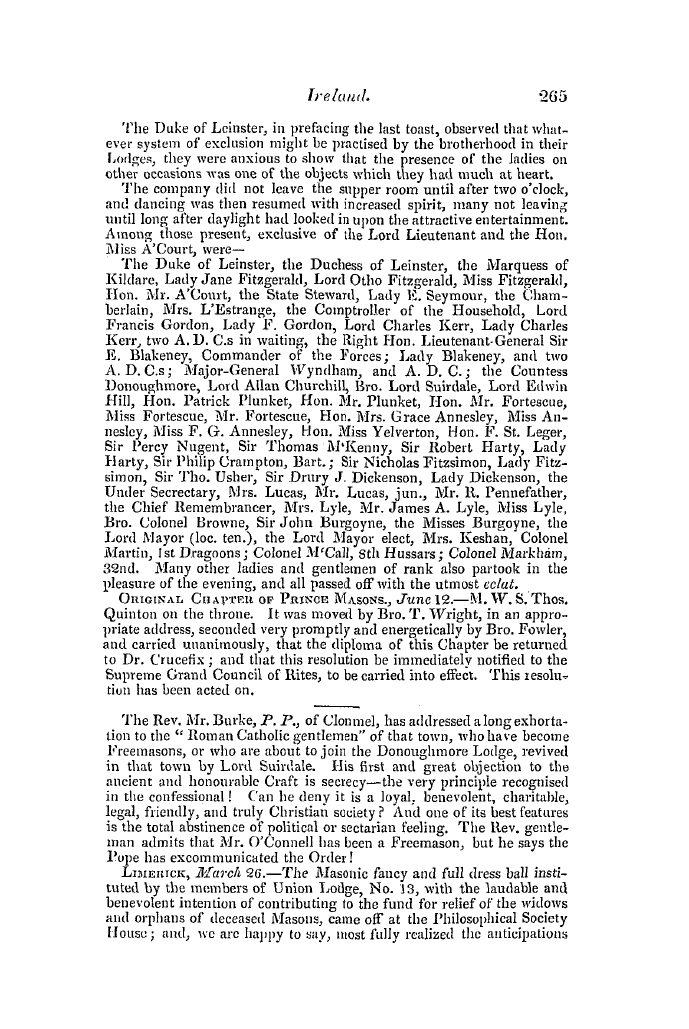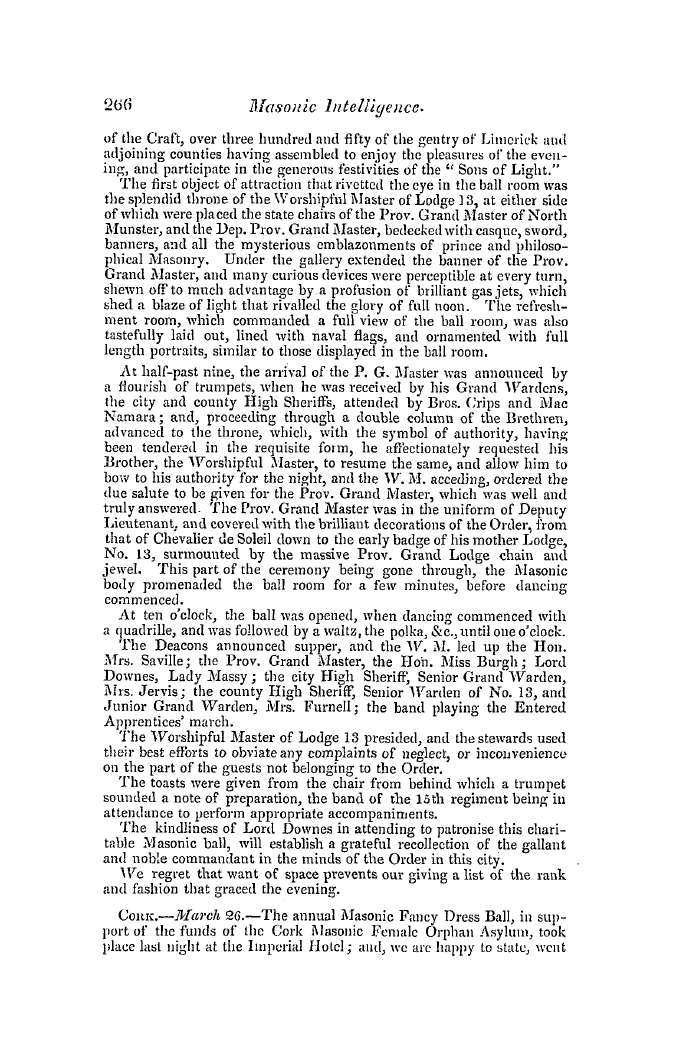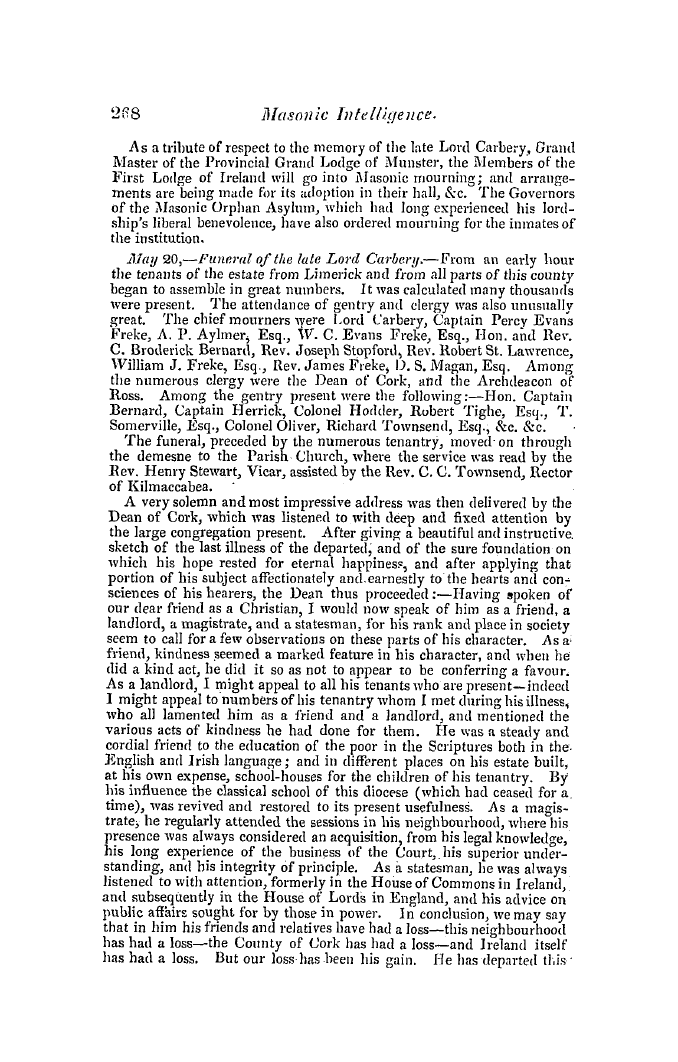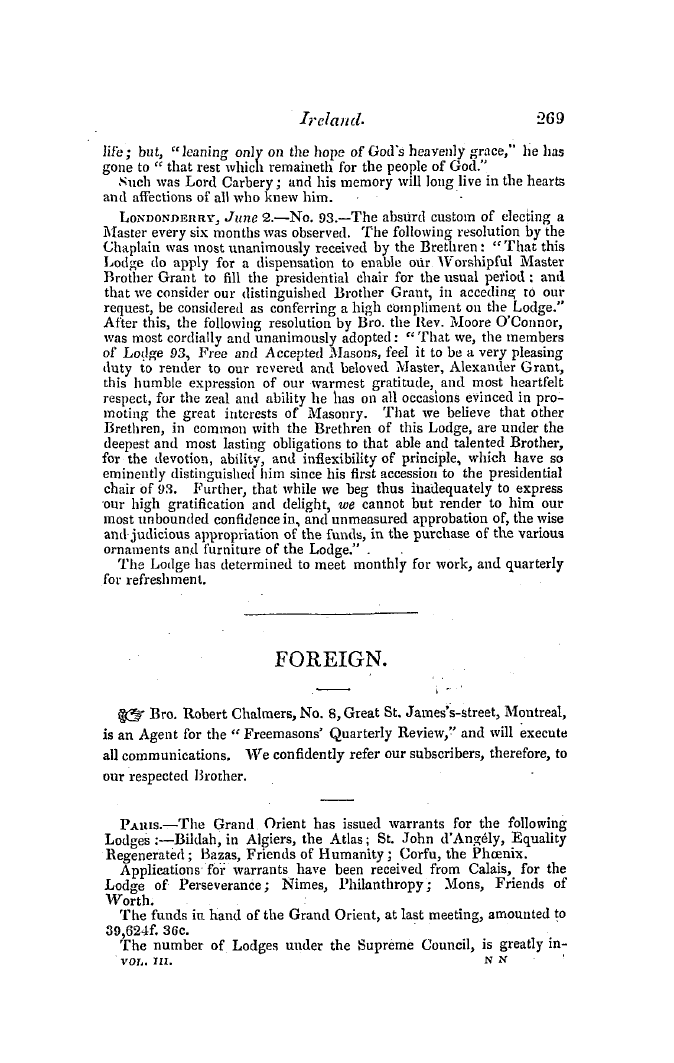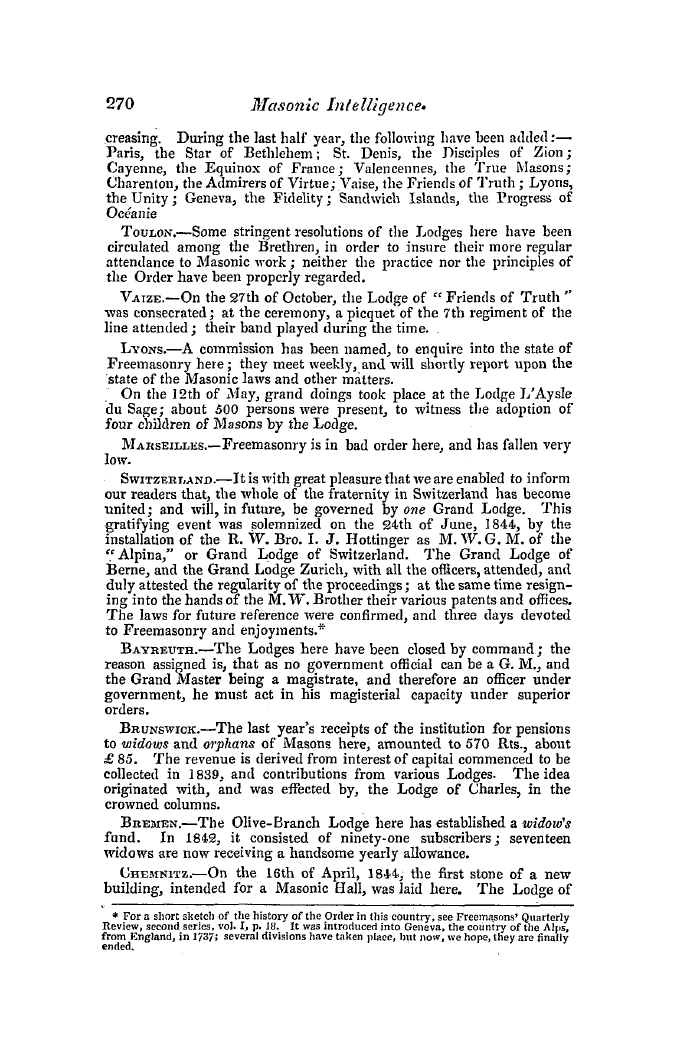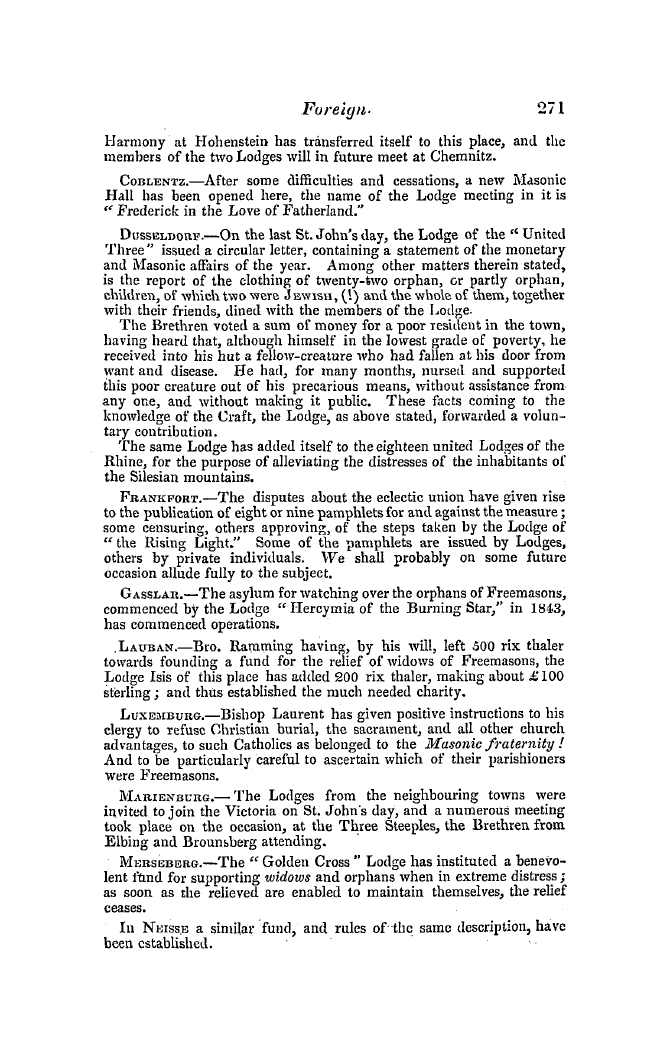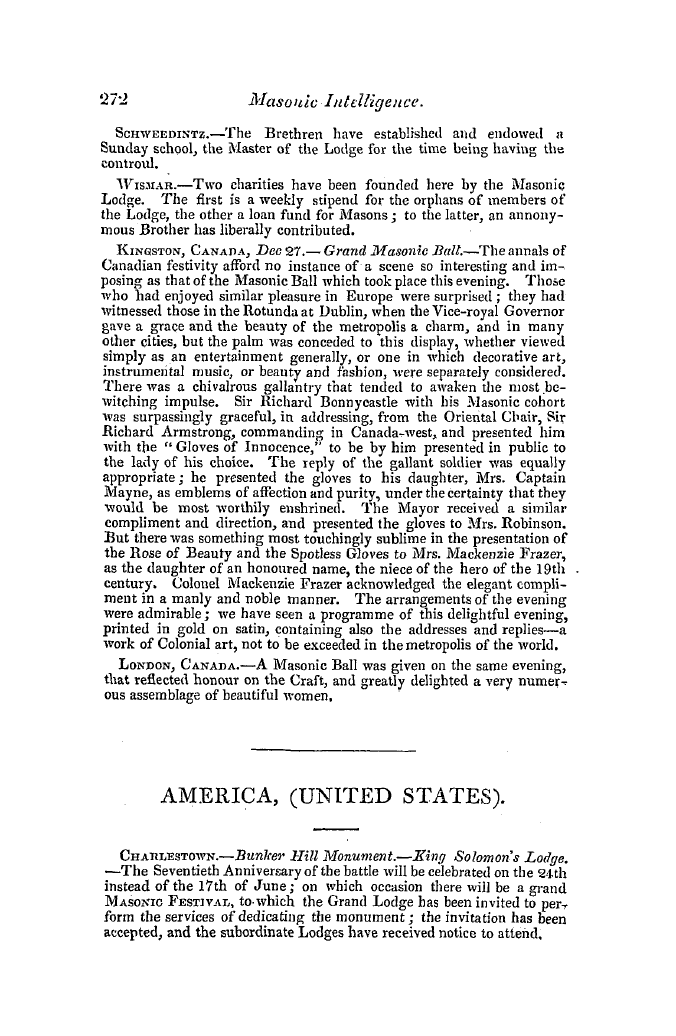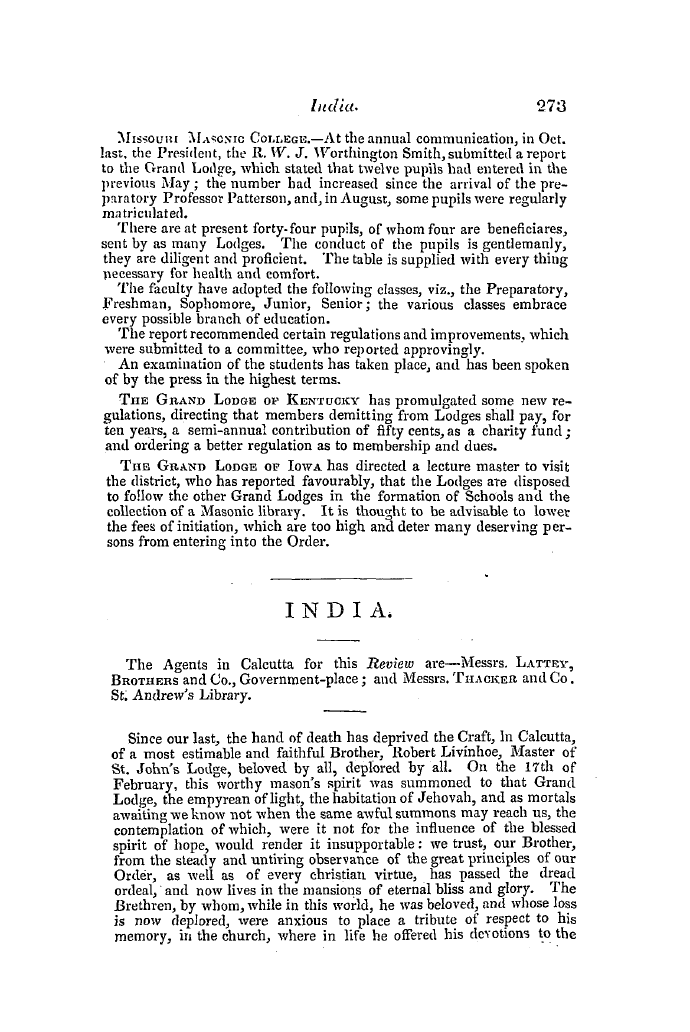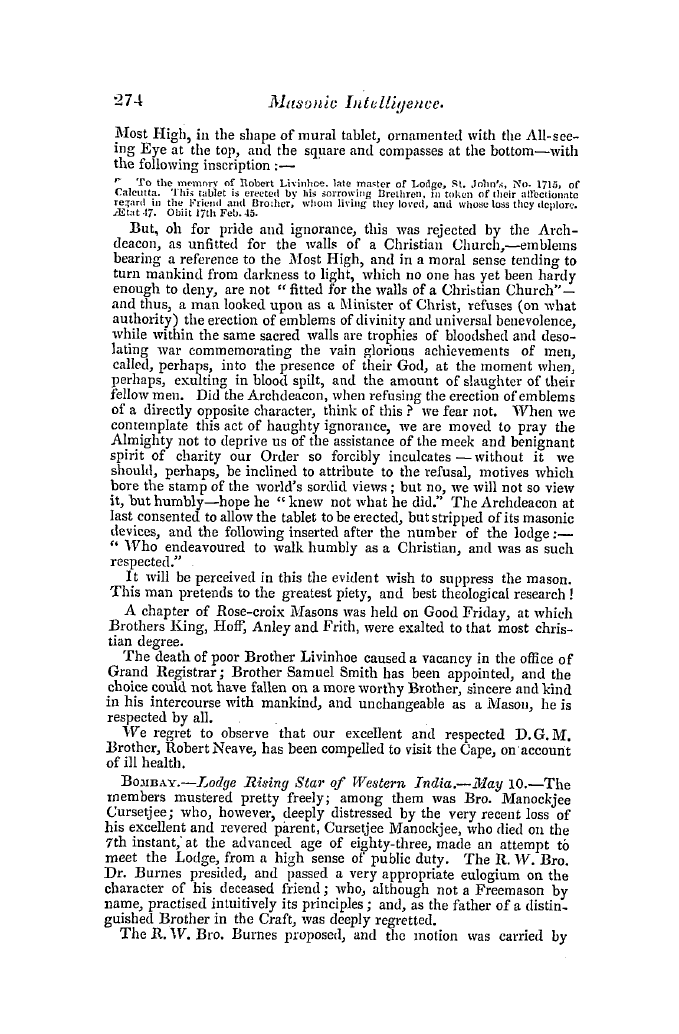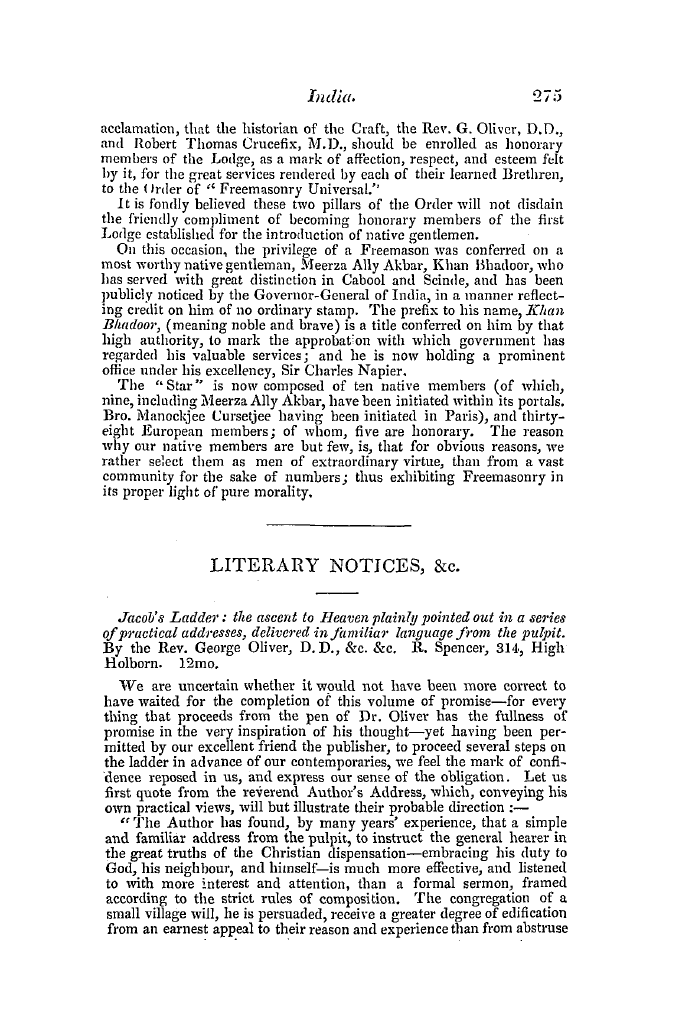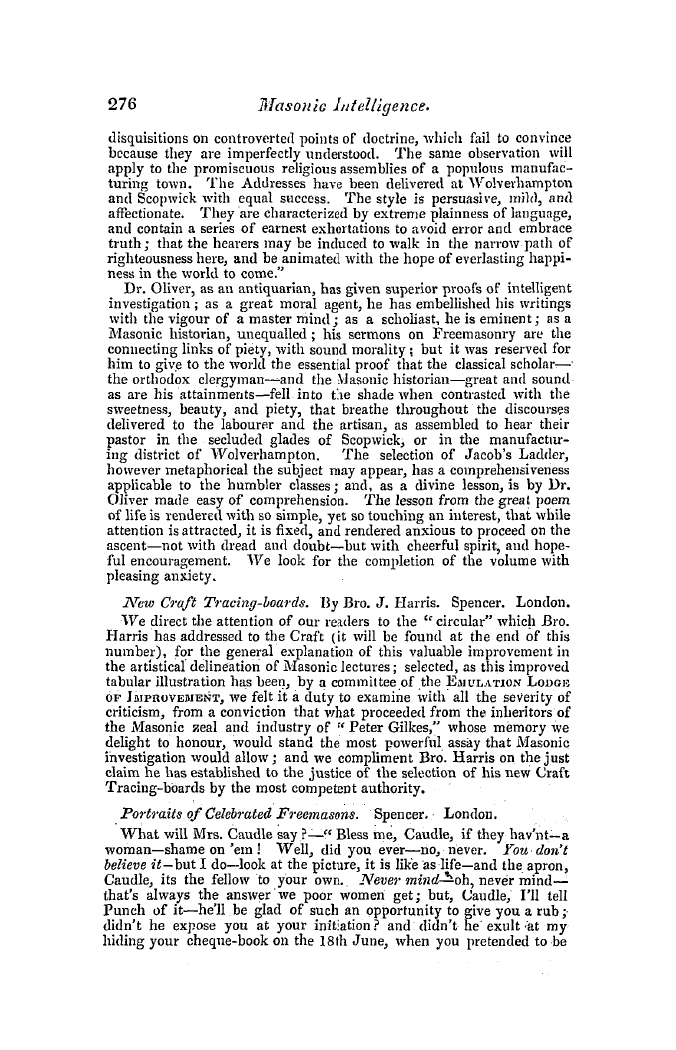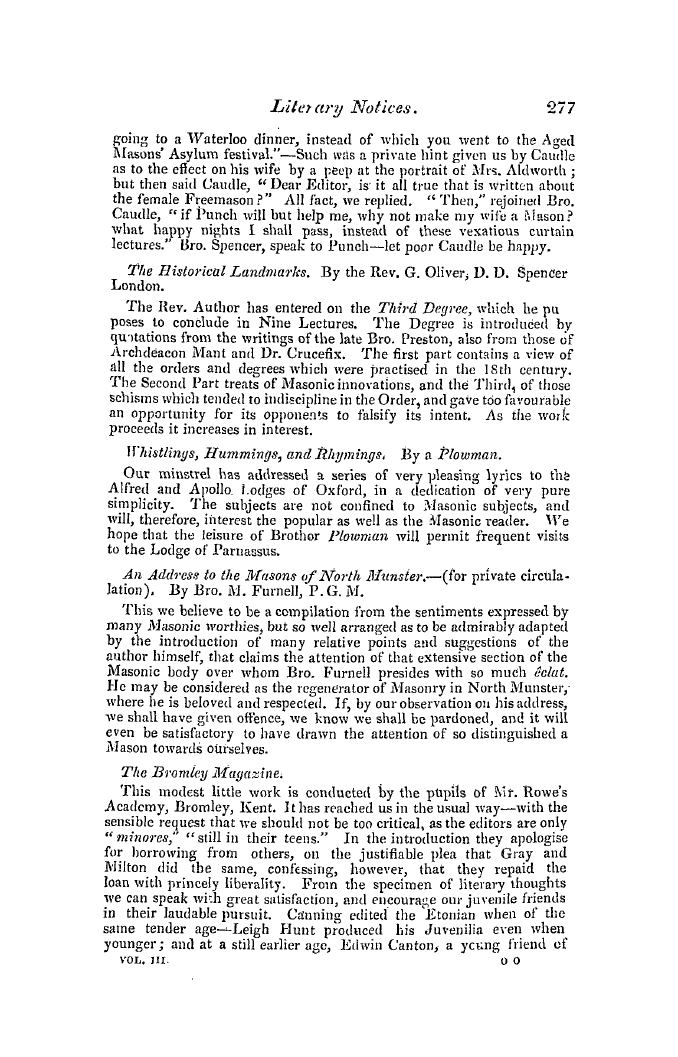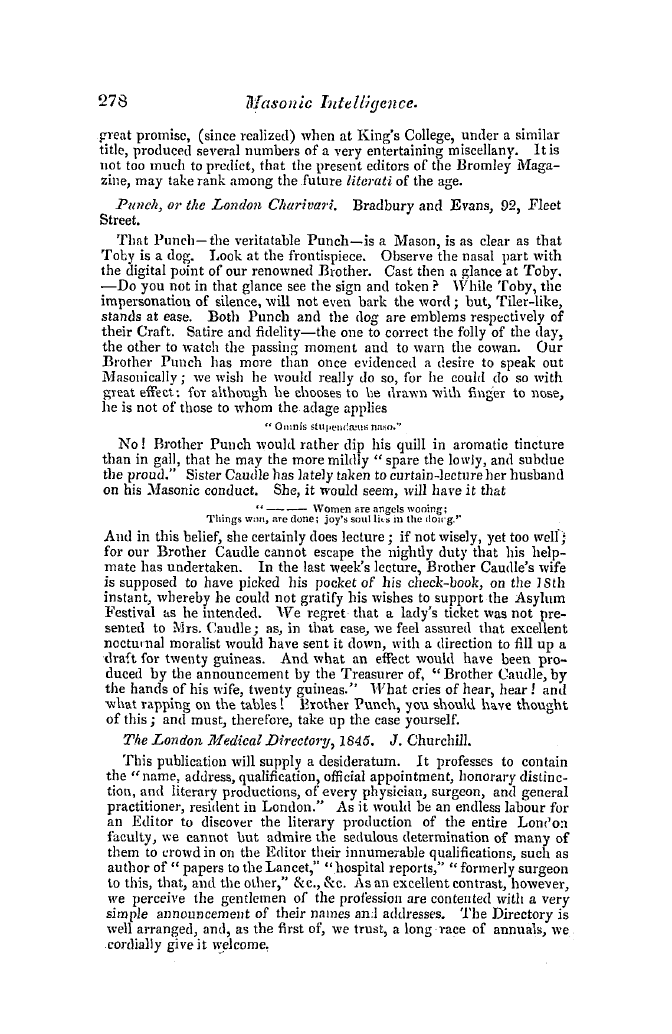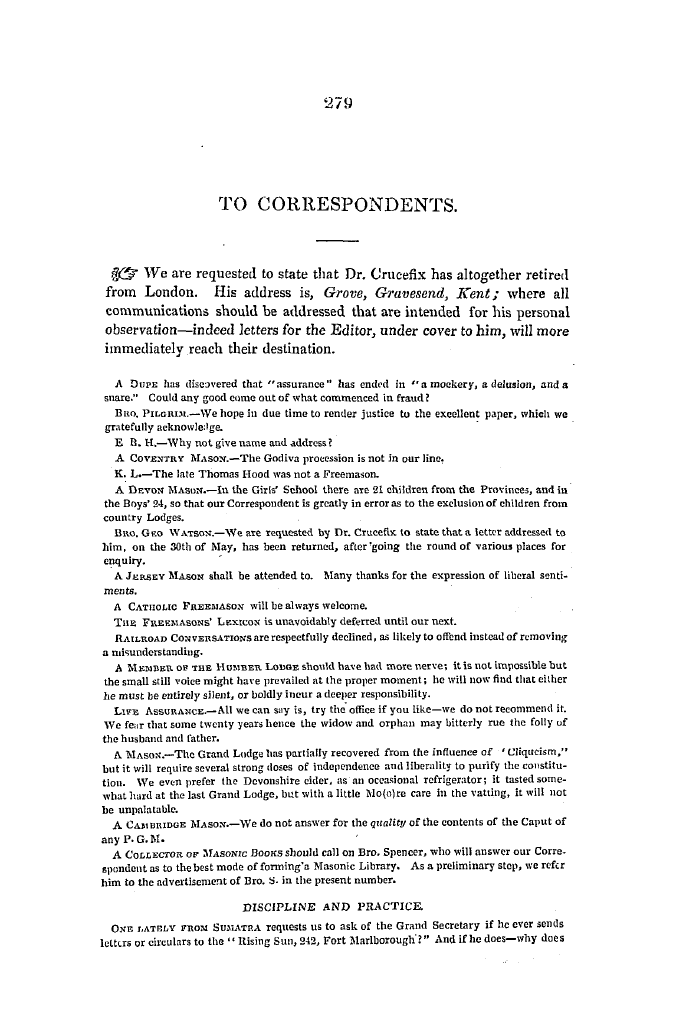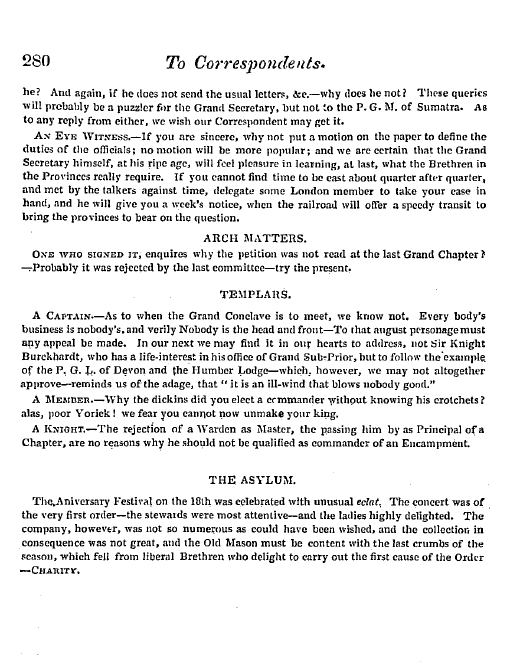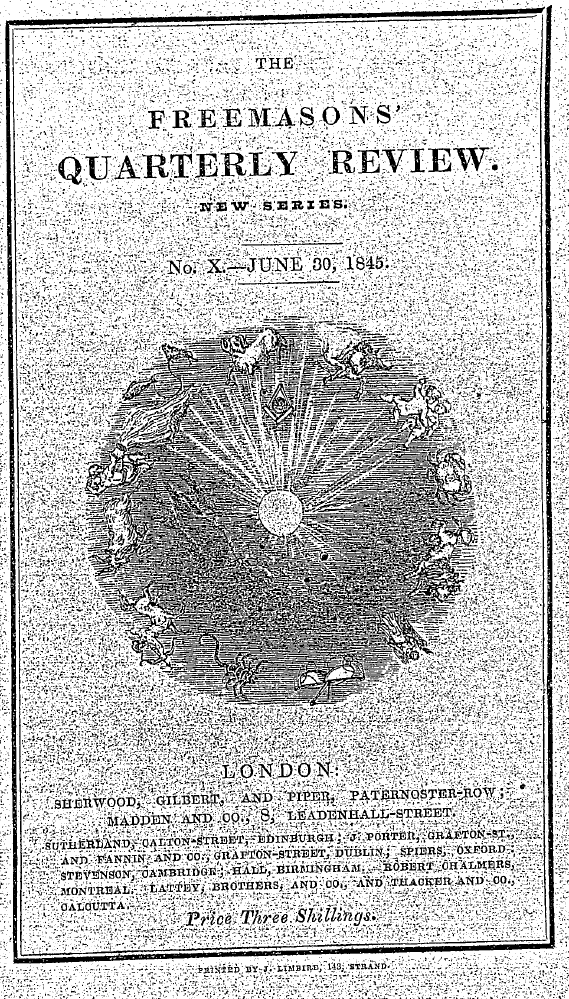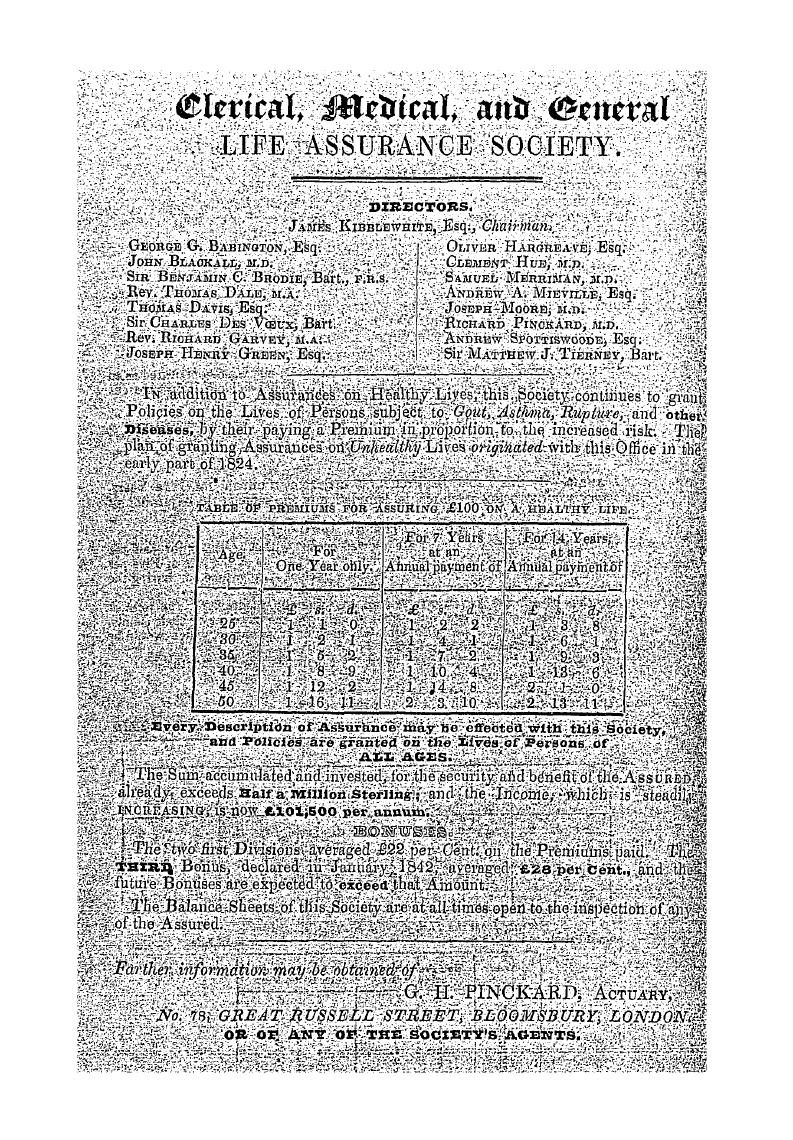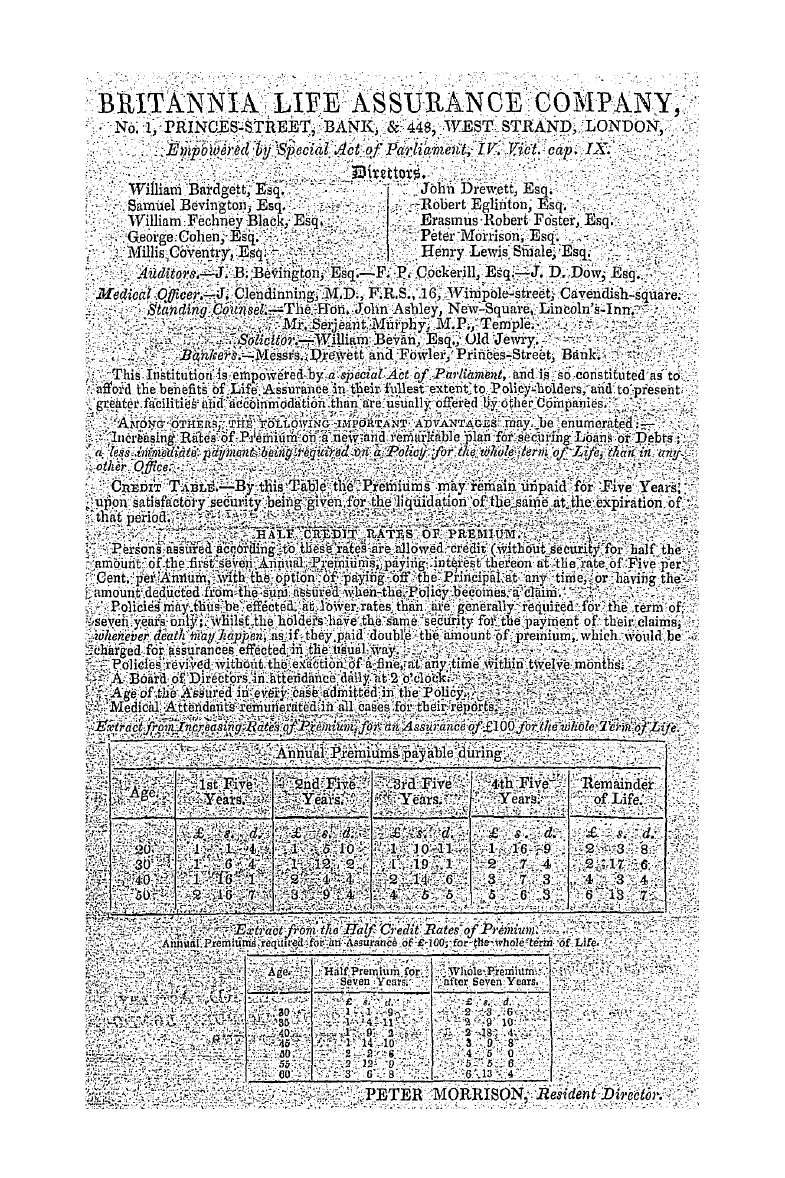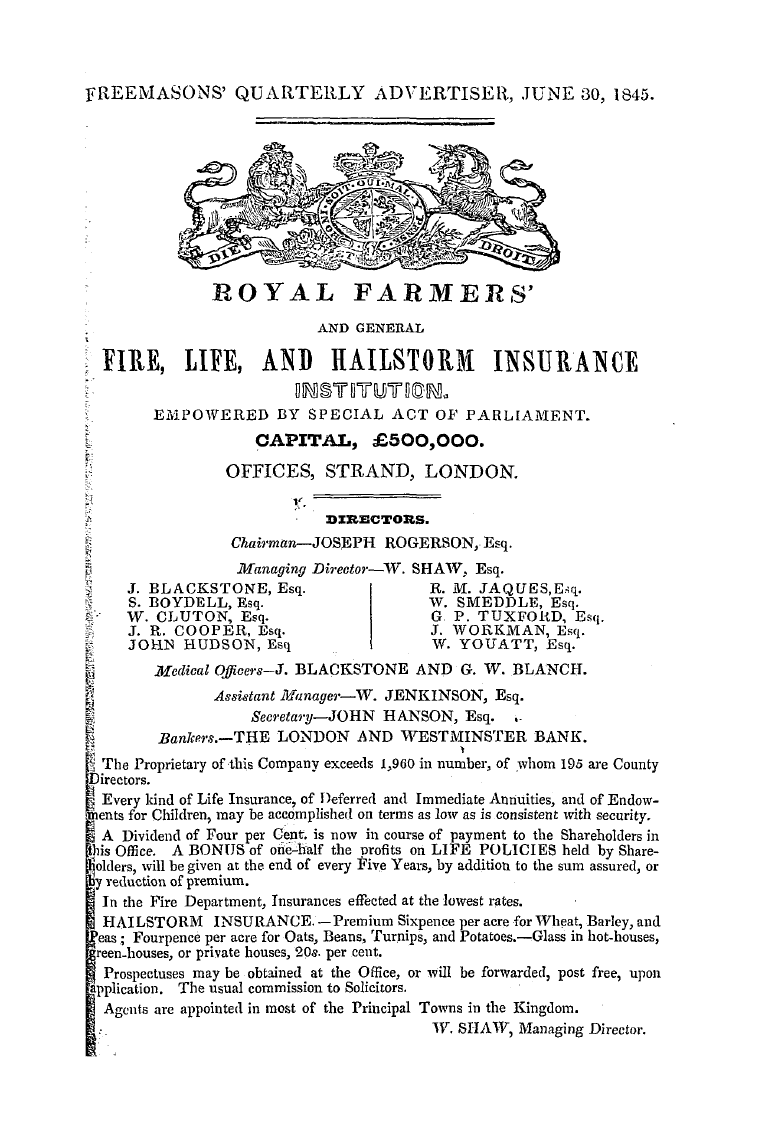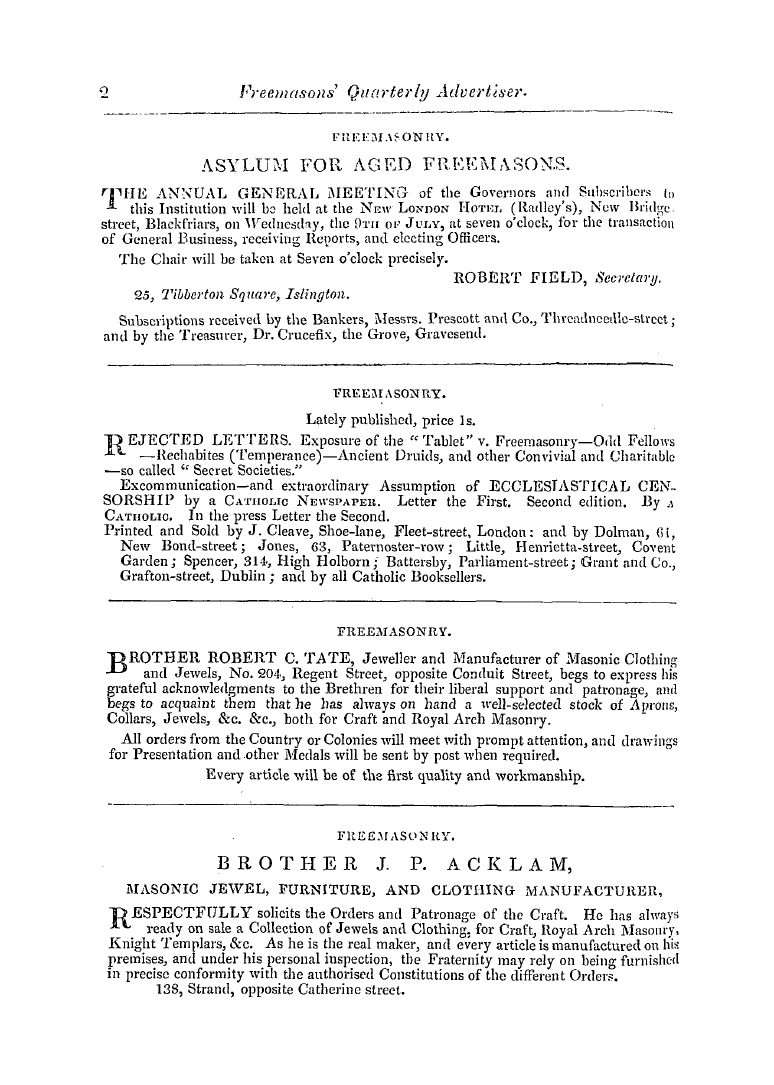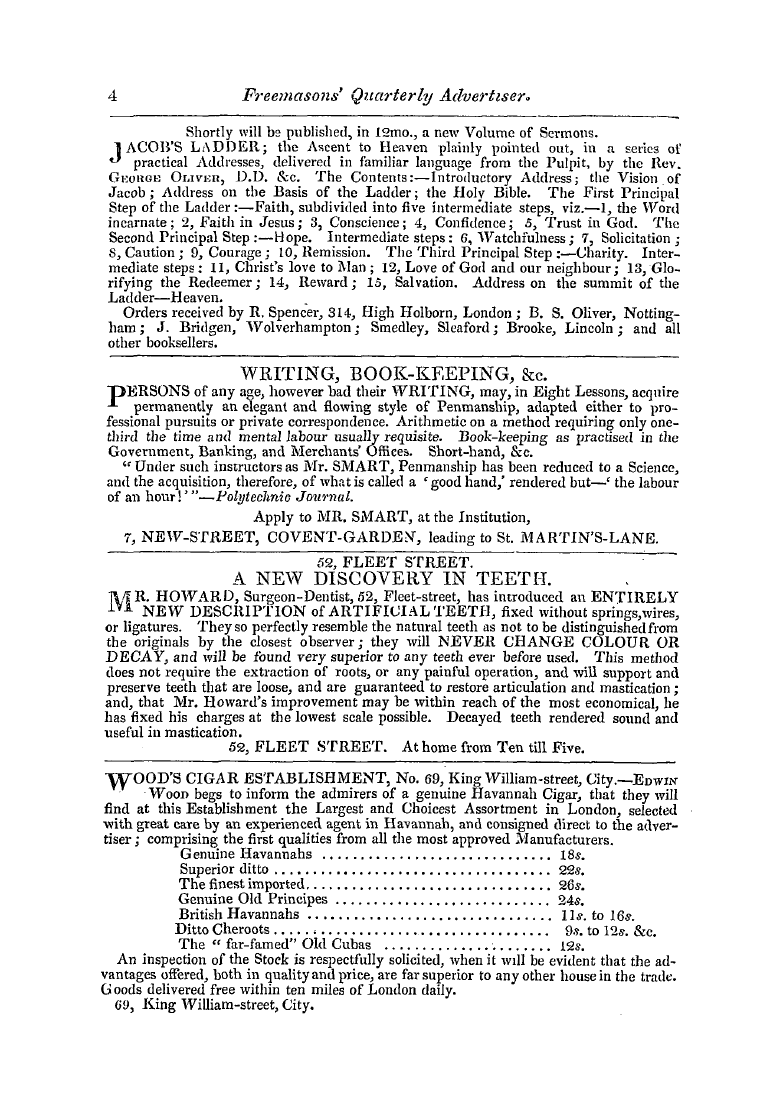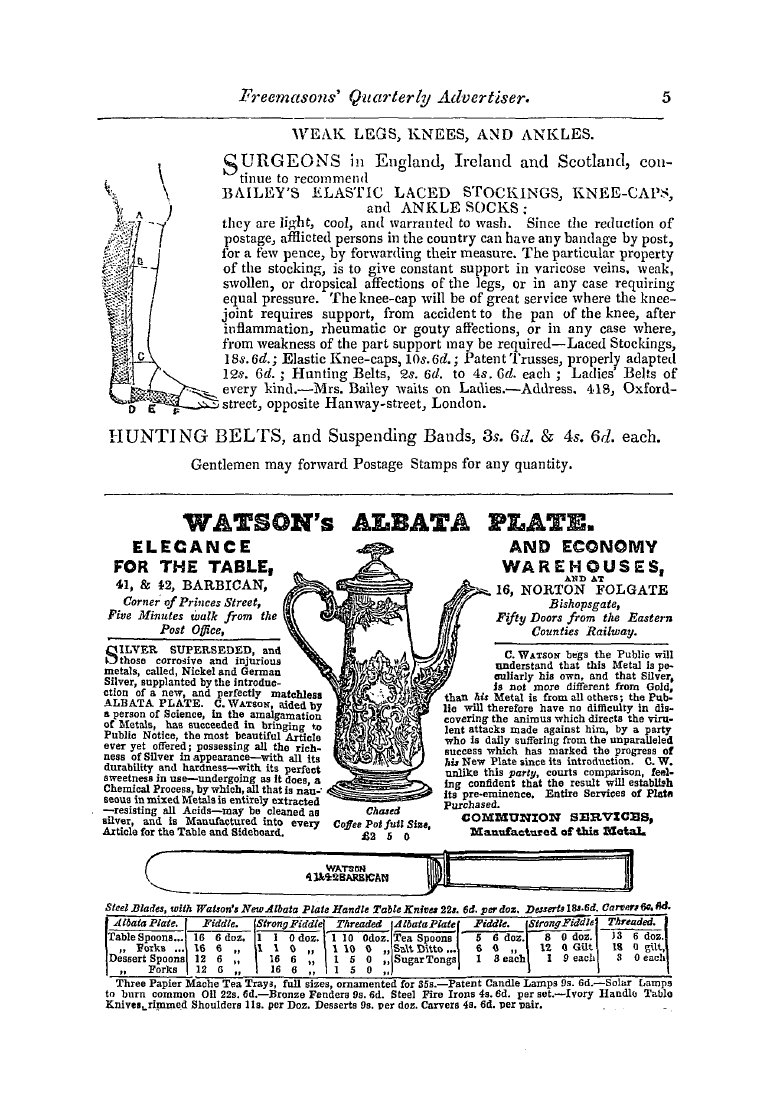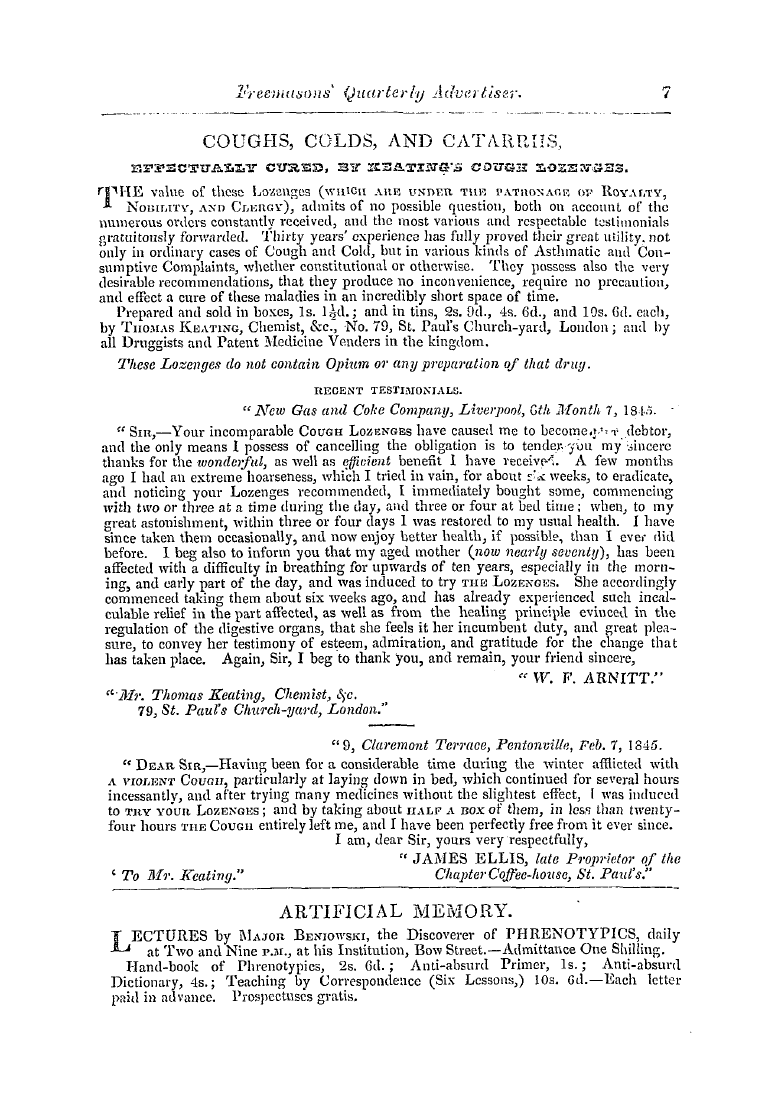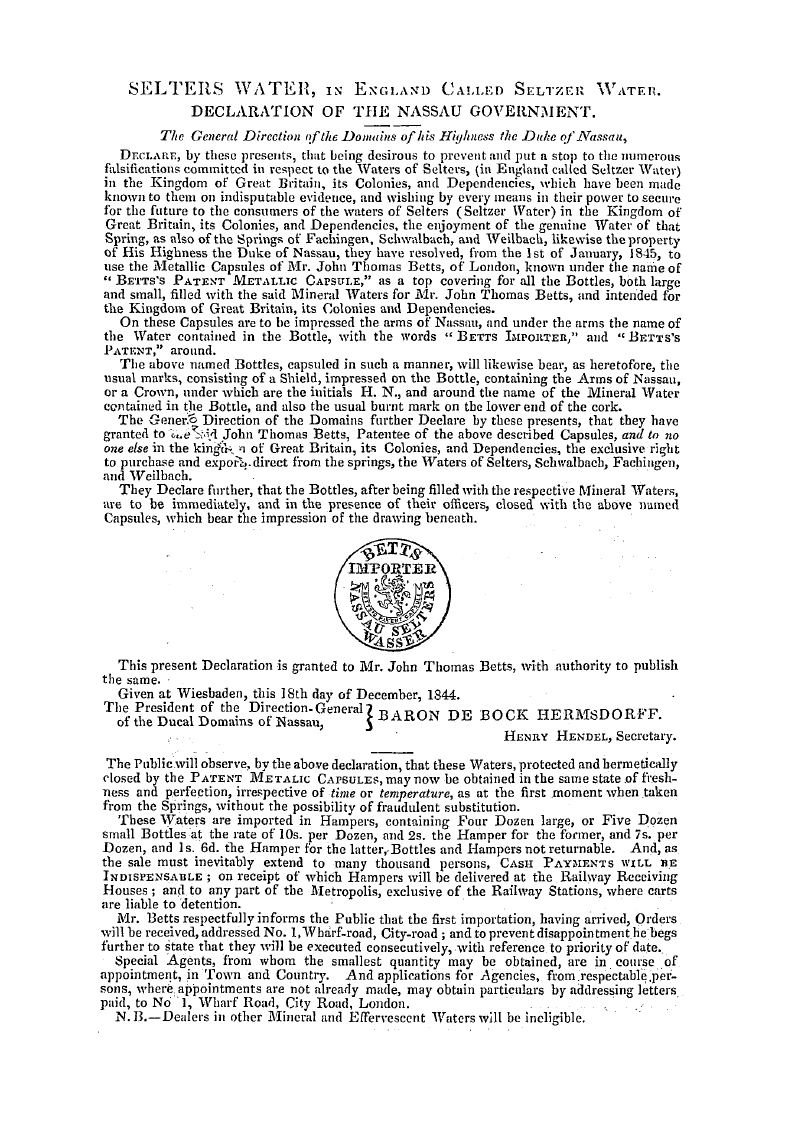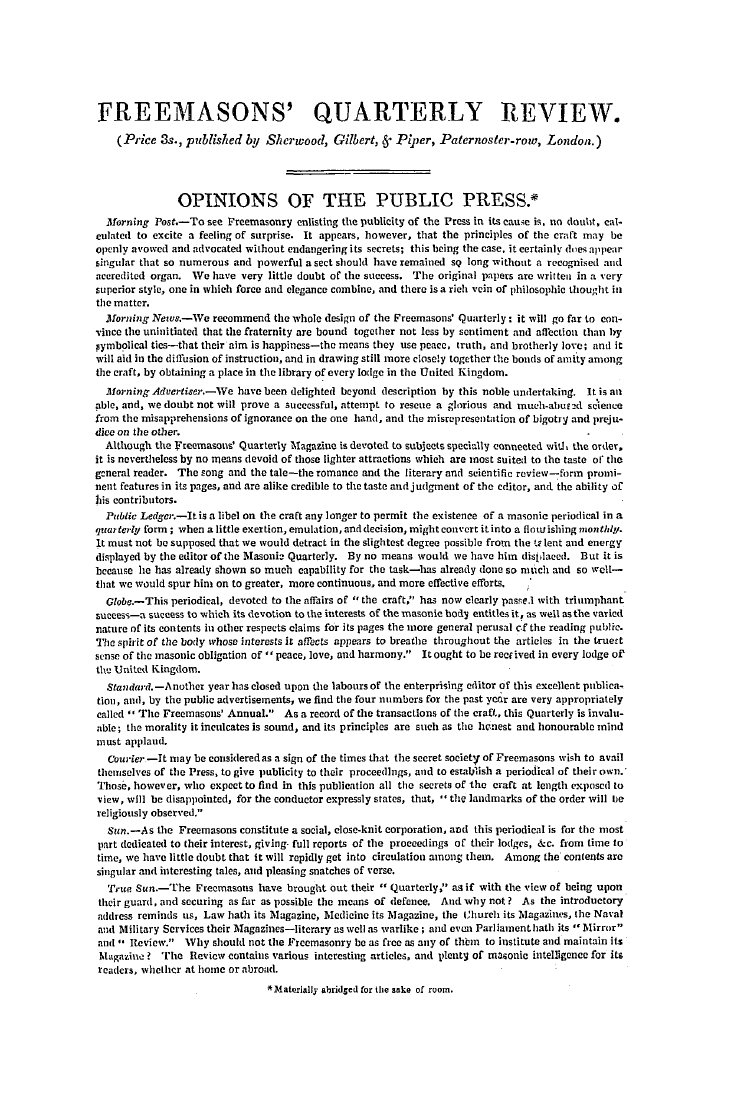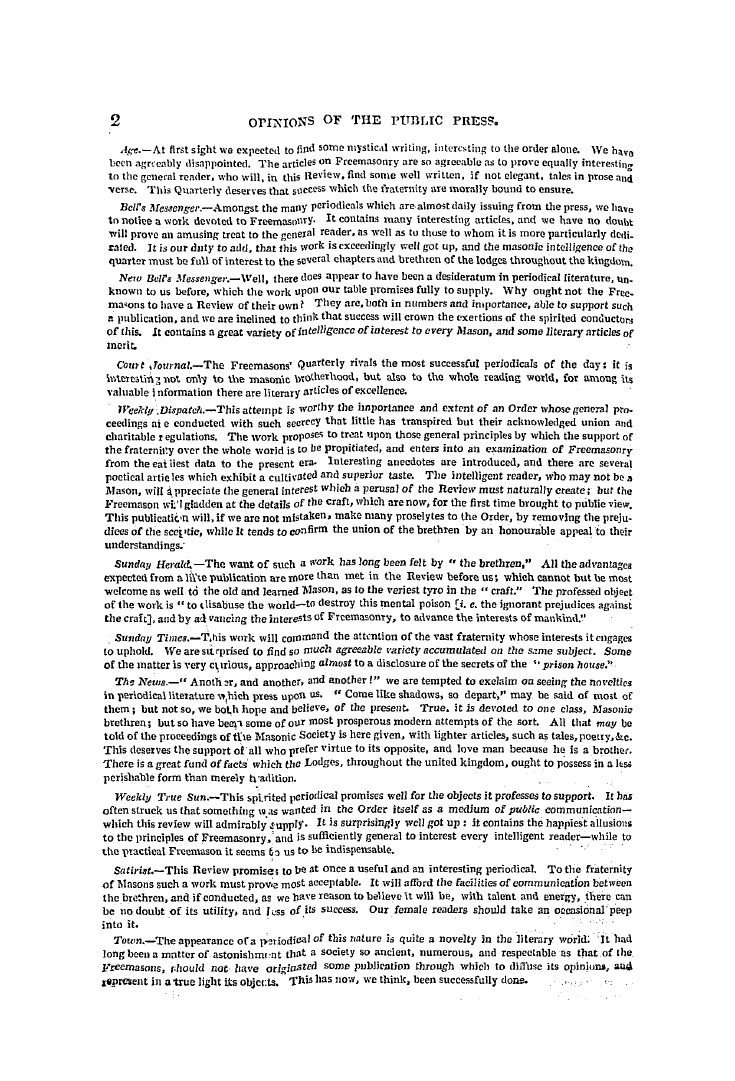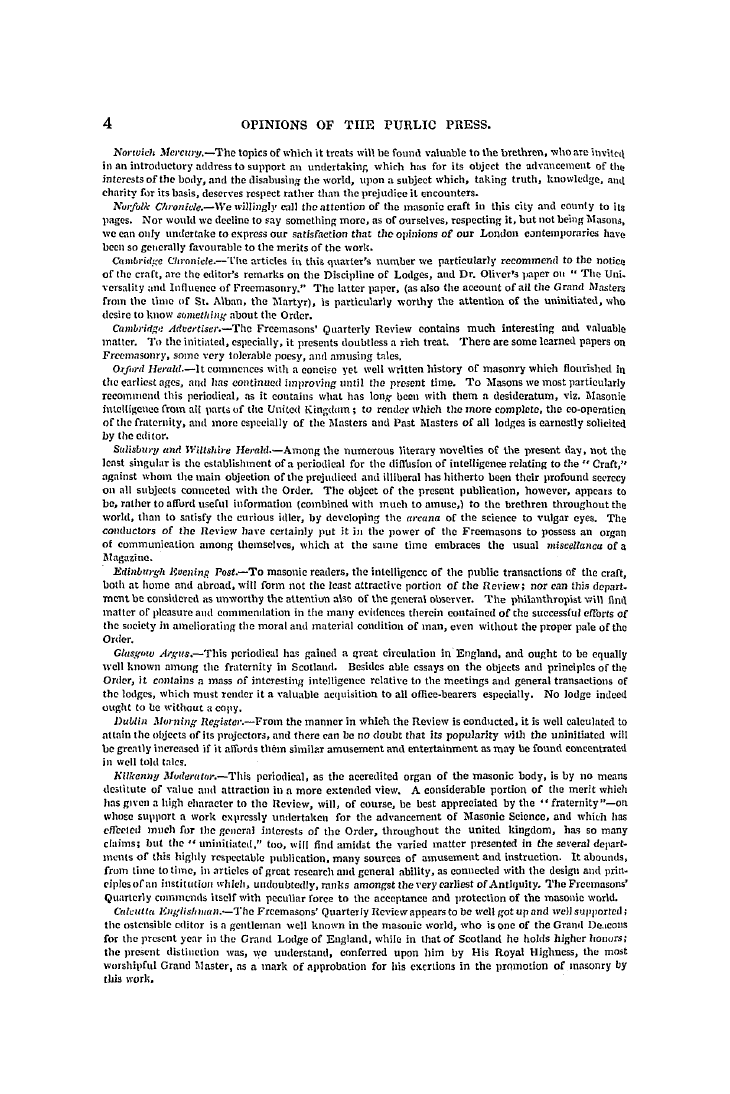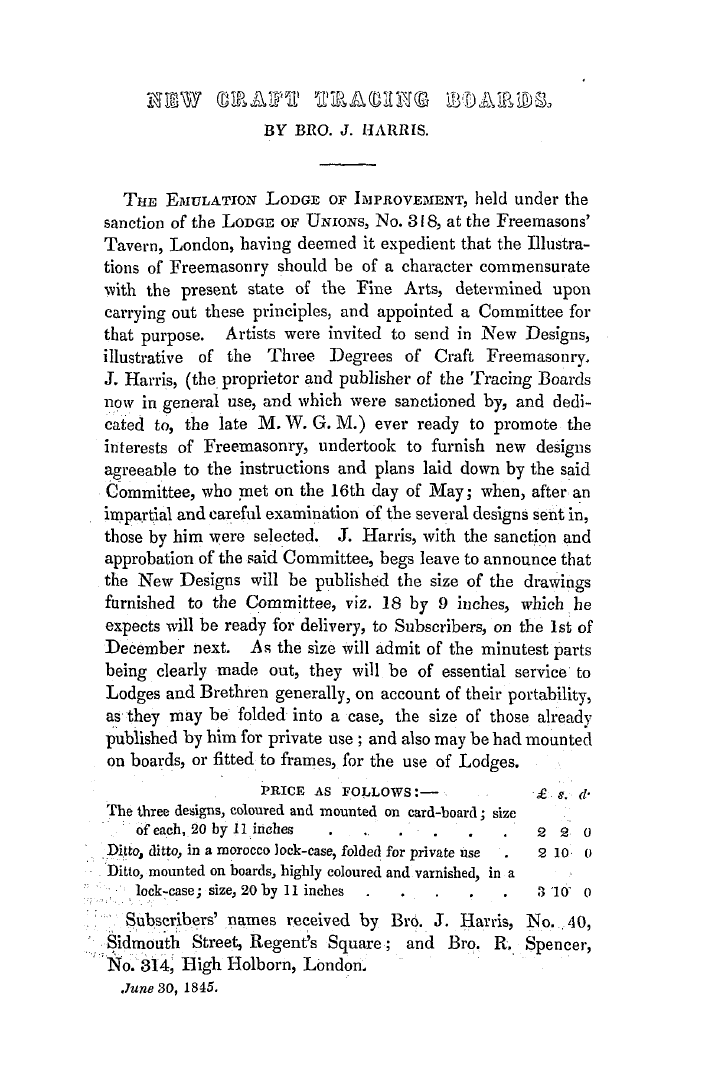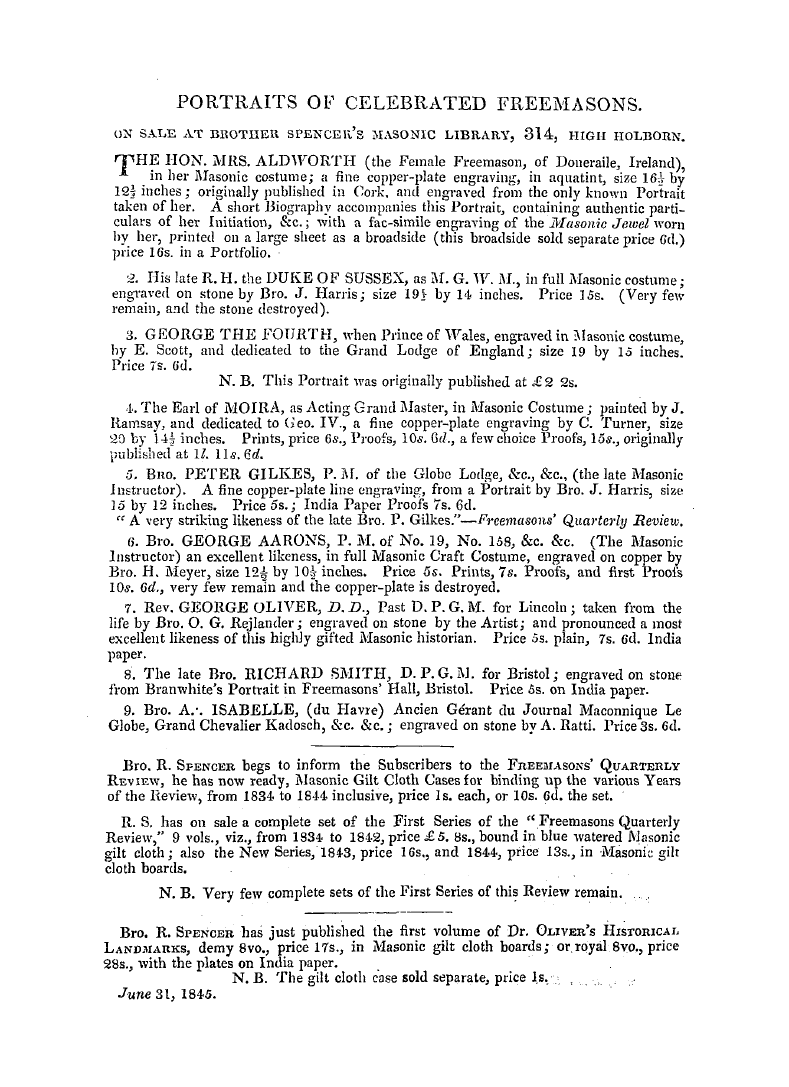Note: This text has been automatically extracted via Optical Character Recognition (OCR) software.
Historical Notes Relative To The Order Of The Temple.
Iiad worn at the battle of Killiekrankie . ( He was , says Cahnct , Grand Master of the Order of Templars in Scotland . ) From a letter in possession of an old and respectable Scottish family , I found that John Earl of Mar succeeded Lord Dundee in the Grand Mastership ; that after his resignation the Duke of Athol undertook the government of the Order ; ancl finally , that in 1745 Prince Charles Edward Stewart was
elected to the high dignity of Grand Master in a solemn Chapter , held in the palace of Holyrood . The letter is written by the Duke of Perth unto Lord Ogilvy , eldest son of the Duke of Airlie , who shortly afterwards strengthened the Scottish army with a great number of gentlemen from Forfarshire and Angus . The letter , which besides this is important , as proving the existence of a cloister or priory of Templars in the north of Scotland , is dated 30 th September , 1745 , and ' the following is
extracted from it : — " It is truly a proud thing to see our prince ( Charles Edward ) in the palace of his fathers , with all the best blood of Scotland around him . He is much beloved of all sorts , ancl we cannot fail to make the pestilent England smoke for it . Upon Monday last there was a great ball at the palace , ancl on Tuesday ( 24 th September , ) by appointment , there was a solemn Chapter of the ancient Chivalry of tiie Temple of Jerusalem , held in the audience-room ; not more than ten Knights
were present ; for since my Lord of Mar demitted the office of Grand Master , no general meeting has been called , save in our own north convent . Our noble prince looked most gallantly in the white robe of the Order , took his possession like a worthy Knight , and after receiving congratulations of all present , did vow that he would restore the Temple higher than it was in the clays of William the Lyon : then the Lord of Athol did demit as Regentand his Royal Hihness was elected Grancl
, g Master . I write you this , knowing how you love the Order . " The fatal issue of the battle of Culloden destroyed the hope of a glorious revival of the Order in Scotland , at the same time as it destroyed the hope of attaining still more glorious objects . The most of the Templars went into exile with their prince , and those who remained iu the land dared not continue the ceremonies of an Order so closelv
connected with the cause of the Stewarts . It is about this time that the real Fraternity ofthe Scottish Templars , with the Order of Freemasonry , took place , under the protection of whose privileges they gathered together their scattered remains . Great and many are the obligations of the Templars unto that body for the protection and assistance ] given unto them at that time , and the generous help did not go unrewarded . The strong support ancl augmentation of prosperity which Scottish Freemasonry received in the last centurythrough the association of the
, Templars ivith that body , is a fact recognised in history . The unfortunate Prince Charles Edward died in Rome on the 3 rd March , 1788 , and was succeeded in the Grancl Mastership by John Oliphant , Esq ., of Bachilton . On his abdication , 15 th October , 1795 , no election took place . It is generally reported that the strong prejudice of the then existing government against all secret societies , prevented the Templars from filling the vacant seat in the customary formothers maintain
; that the delay originated in a communication received from the Cardinal of York , the last descendant of the house of Stewart . Whichever of those opinions is right , it is certain that the want of a head caused no little confusion in the affairs of the Templars . There was a sort of a fraternization took place between the Scottish Templars and theEnglish and Irish Masonic bodies , who had illegally adopted the title of Templars ;
Note: This text has been automatically extracted via Optical Character Recognition (OCR) software.
Historical Notes Relative To The Order Of The Temple.
Iiad worn at the battle of Killiekrankie . ( He was , says Cahnct , Grand Master of the Order of Templars in Scotland . ) From a letter in possession of an old and respectable Scottish family , I found that John Earl of Mar succeeded Lord Dundee in the Grand Mastership ; that after his resignation the Duke of Athol undertook the government of the Order ; ancl finally , that in 1745 Prince Charles Edward Stewart was
elected to the high dignity of Grand Master in a solemn Chapter , held in the palace of Holyrood . The letter is written by the Duke of Perth unto Lord Ogilvy , eldest son of the Duke of Airlie , who shortly afterwards strengthened the Scottish army with a great number of gentlemen from Forfarshire and Angus . The letter , which besides this is important , as proving the existence of a cloister or priory of Templars in the north of Scotland , is dated 30 th September , 1745 , and ' the following is
extracted from it : — " It is truly a proud thing to see our prince ( Charles Edward ) in the palace of his fathers , with all the best blood of Scotland around him . He is much beloved of all sorts , ancl we cannot fail to make the pestilent England smoke for it . Upon Monday last there was a great ball at the palace , ancl on Tuesday ( 24 th September , ) by appointment , there was a solemn Chapter of the ancient Chivalry of tiie Temple of Jerusalem , held in the audience-room ; not more than ten Knights
were present ; for since my Lord of Mar demitted the office of Grand Master , no general meeting has been called , save in our own north convent . Our noble prince looked most gallantly in the white robe of the Order , took his possession like a worthy Knight , and after receiving congratulations of all present , did vow that he would restore the Temple higher than it was in the clays of William the Lyon : then the Lord of Athol did demit as Regentand his Royal Hihness was elected Grancl
, g Master . I write you this , knowing how you love the Order . " The fatal issue of the battle of Culloden destroyed the hope of a glorious revival of the Order in Scotland , at the same time as it destroyed the hope of attaining still more glorious objects . The most of the Templars went into exile with their prince , and those who remained iu the land dared not continue the ceremonies of an Order so closelv
connected with the cause of the Stewarts . It is about this time that the real Fraternity ofthe Scottish Templars , with the Order of Freemasonry , took place , under the protection of whose privileges they gathered together their scattered remains . Great and many are the obligations of the Templars unto that body for the protection and assistance ] given unto them at that time , and the generous help did not go unrewarded . The strong support ancl augmentation of prosperity which Scottish Freemasonry received in the last centurythrough the association of the
, Templars ivith that body , is a fact recognised in history . The unfortunate Prince Charles Edward died in Rome on the 3 rd March , 1788 , and was succeeded in the Grancl Mastership by John Oliphant , Esq ., of Bachilton . On his abdication , 15 th October , 1795 , no election took place . It is generally reported that the strong prejudice of the then existing government against all secret societies , prevented the Templars from filling the vacant seat in the customary formothers maintain
; that the delay originated in a communication received from the Cardinal of York , the last descendant of the house of Stewart . Whichever of those opinions is right , it is certain that the want of a head caused no little confusion in the affairs of the Templars . There was a sort of a fraternization took place between the Scottish Templars and theEnglish and Irish Masonic bodies , who had illegally adopted the title of Templars ;


























































